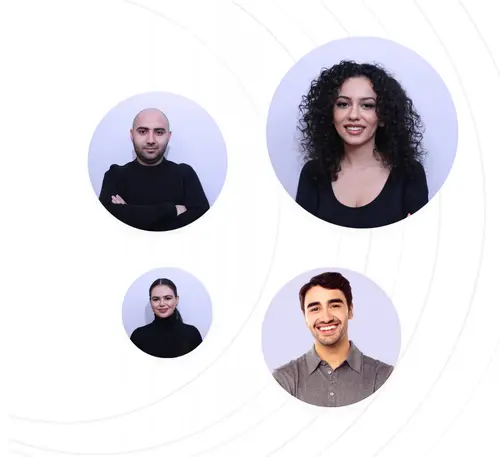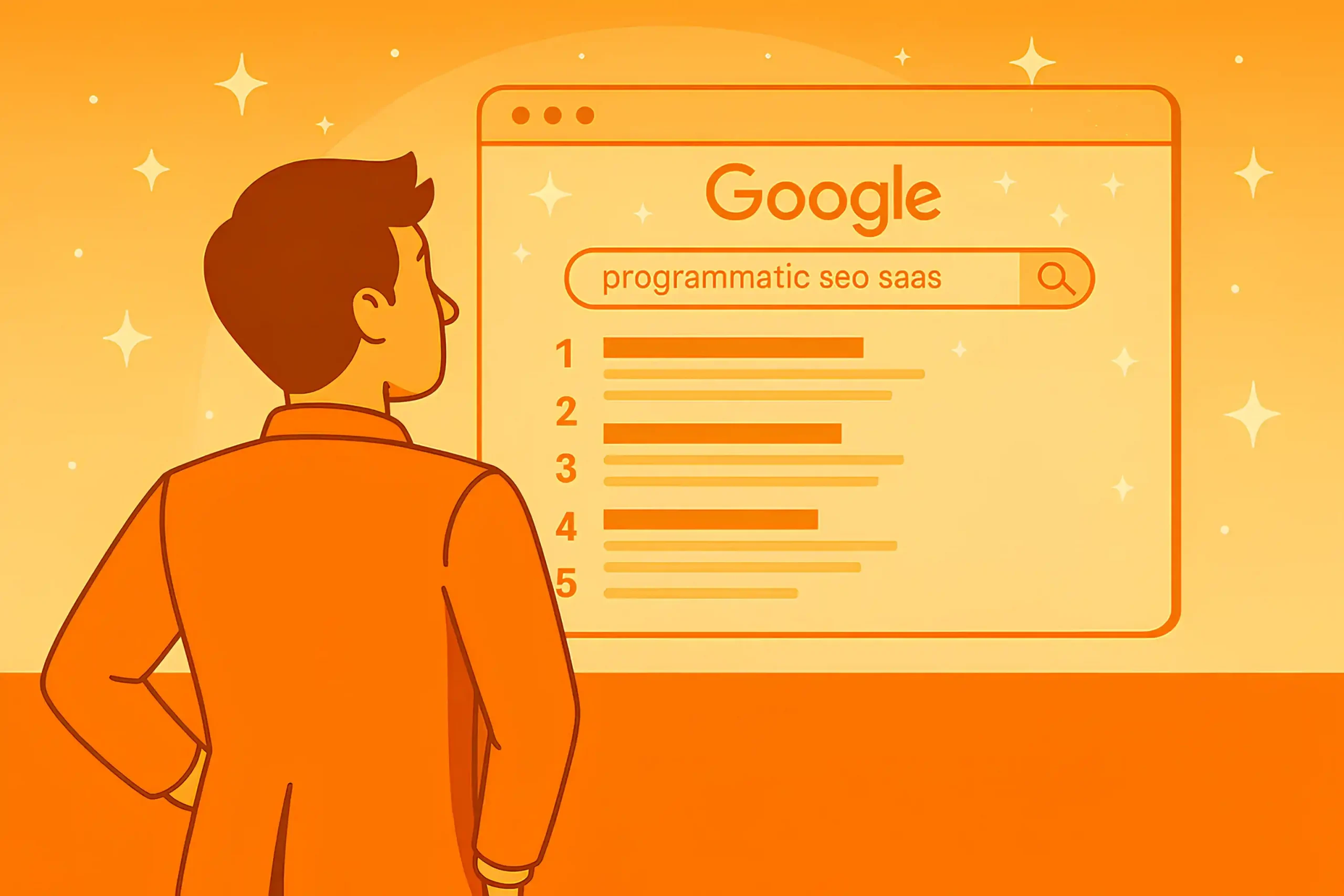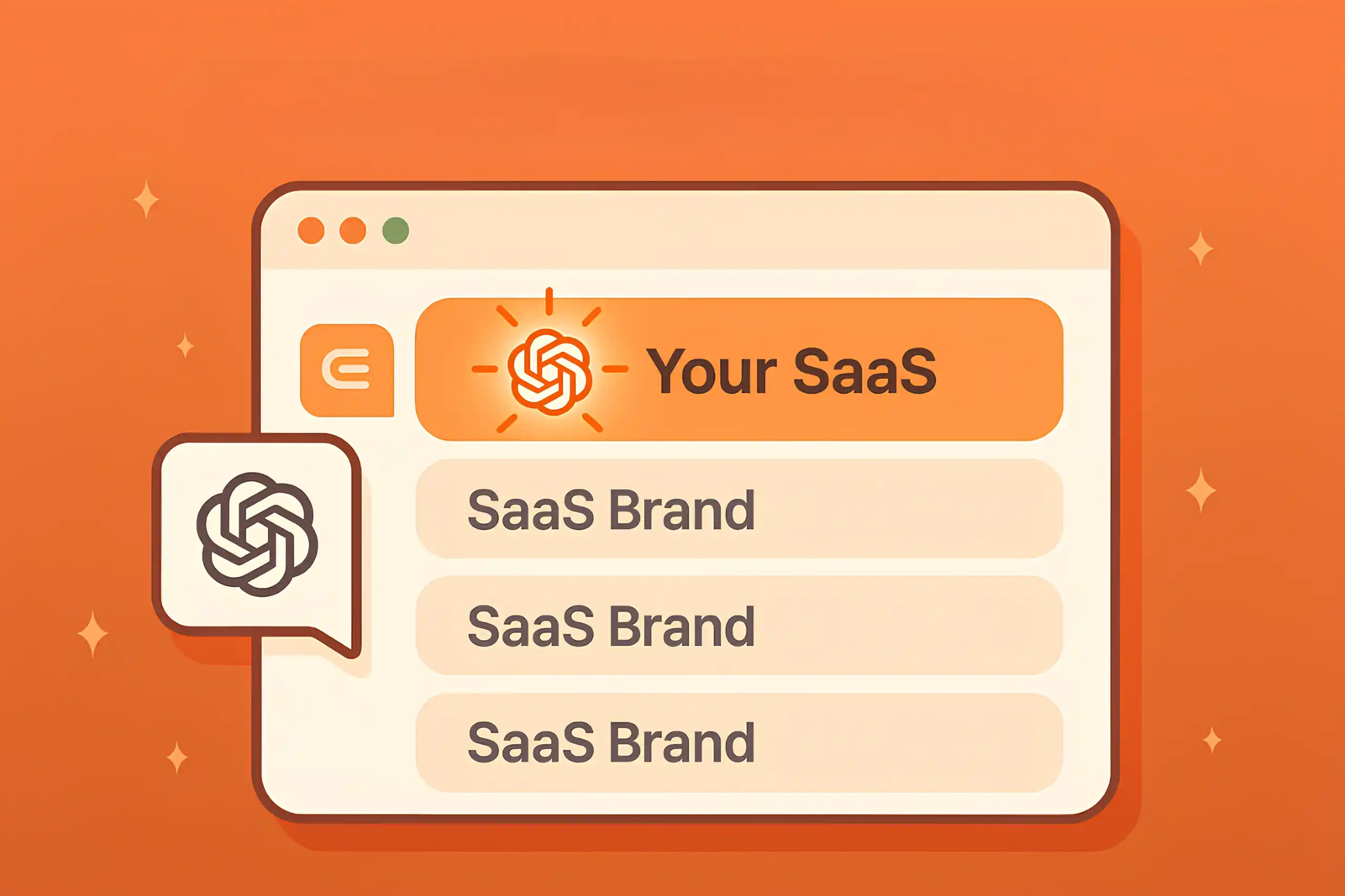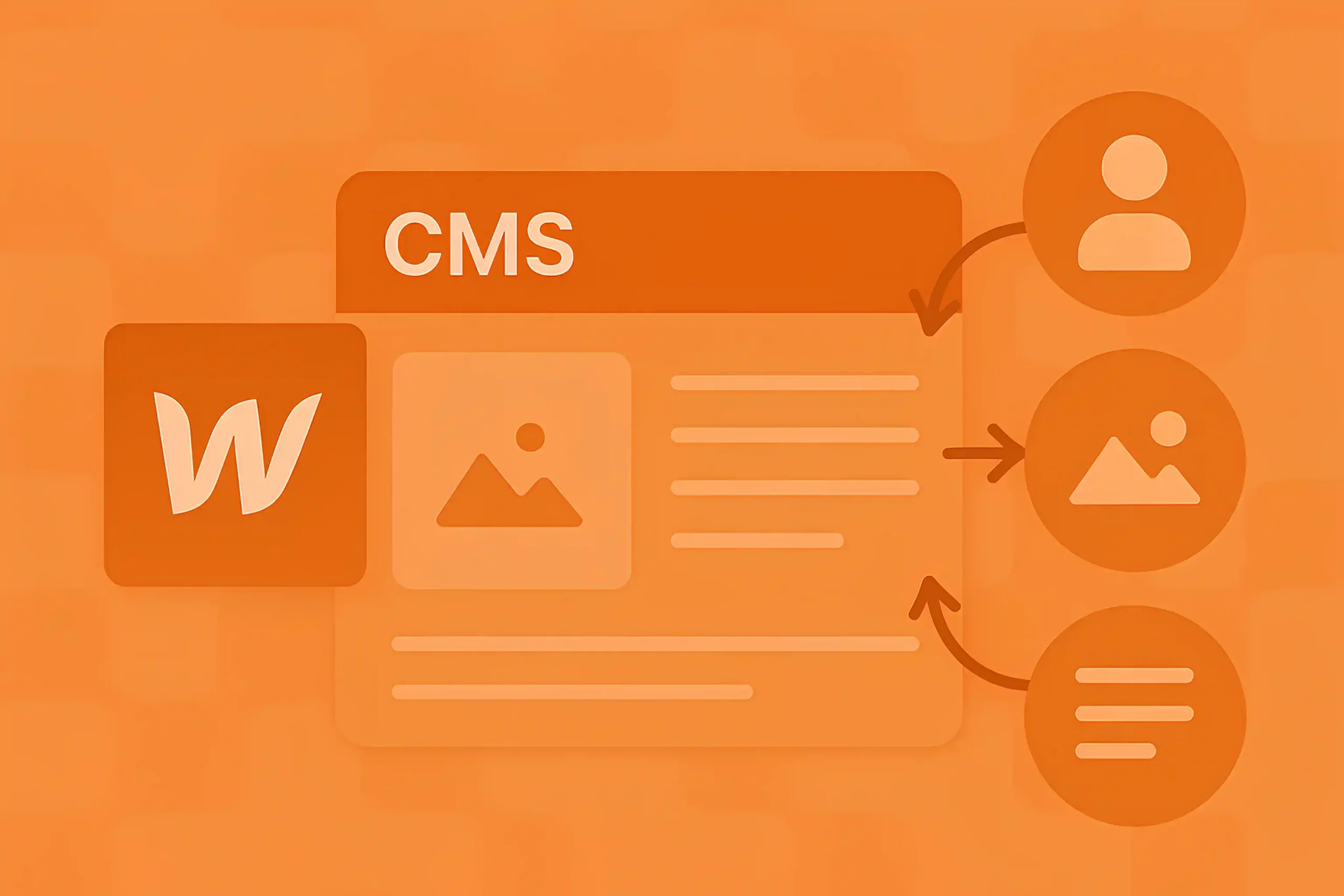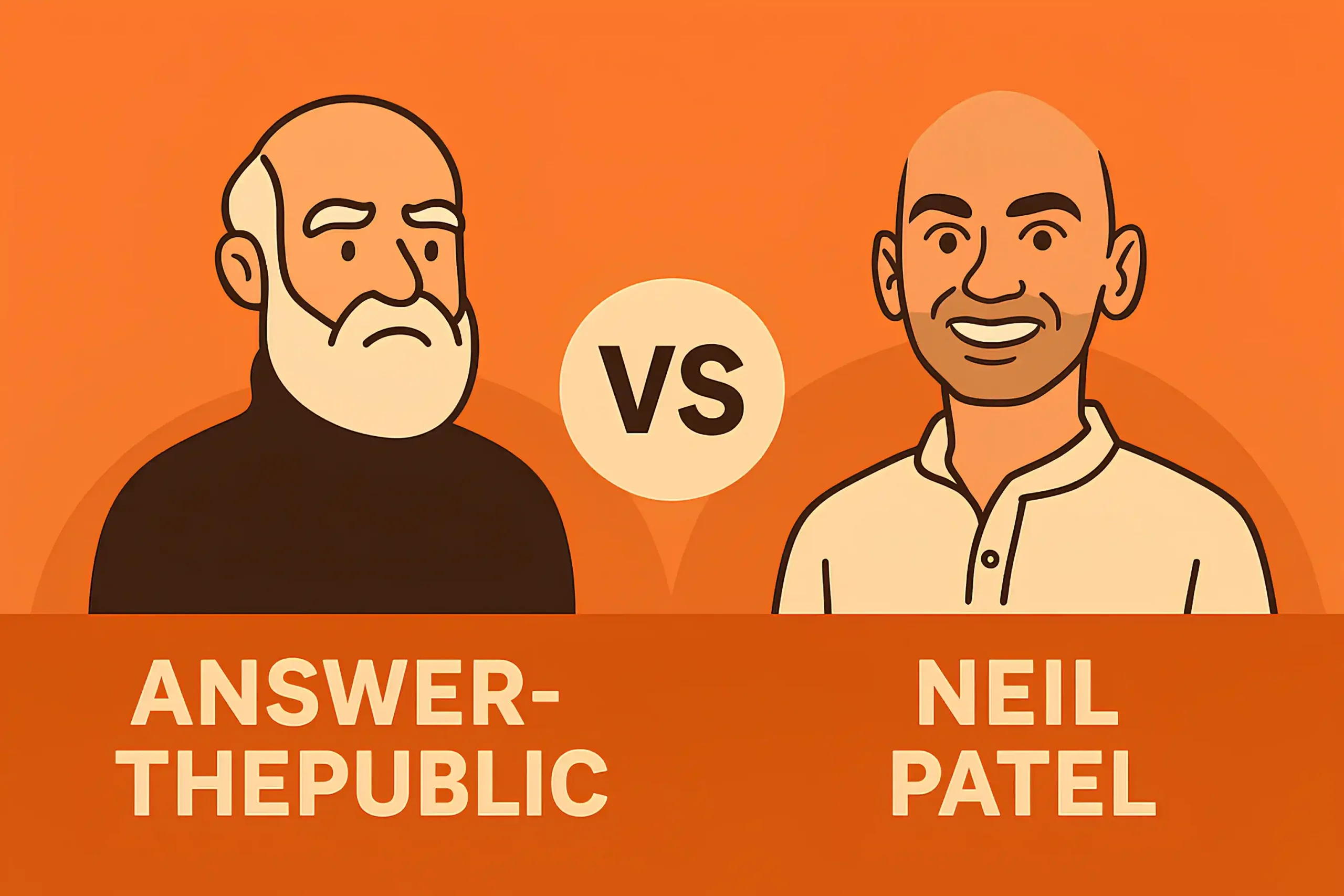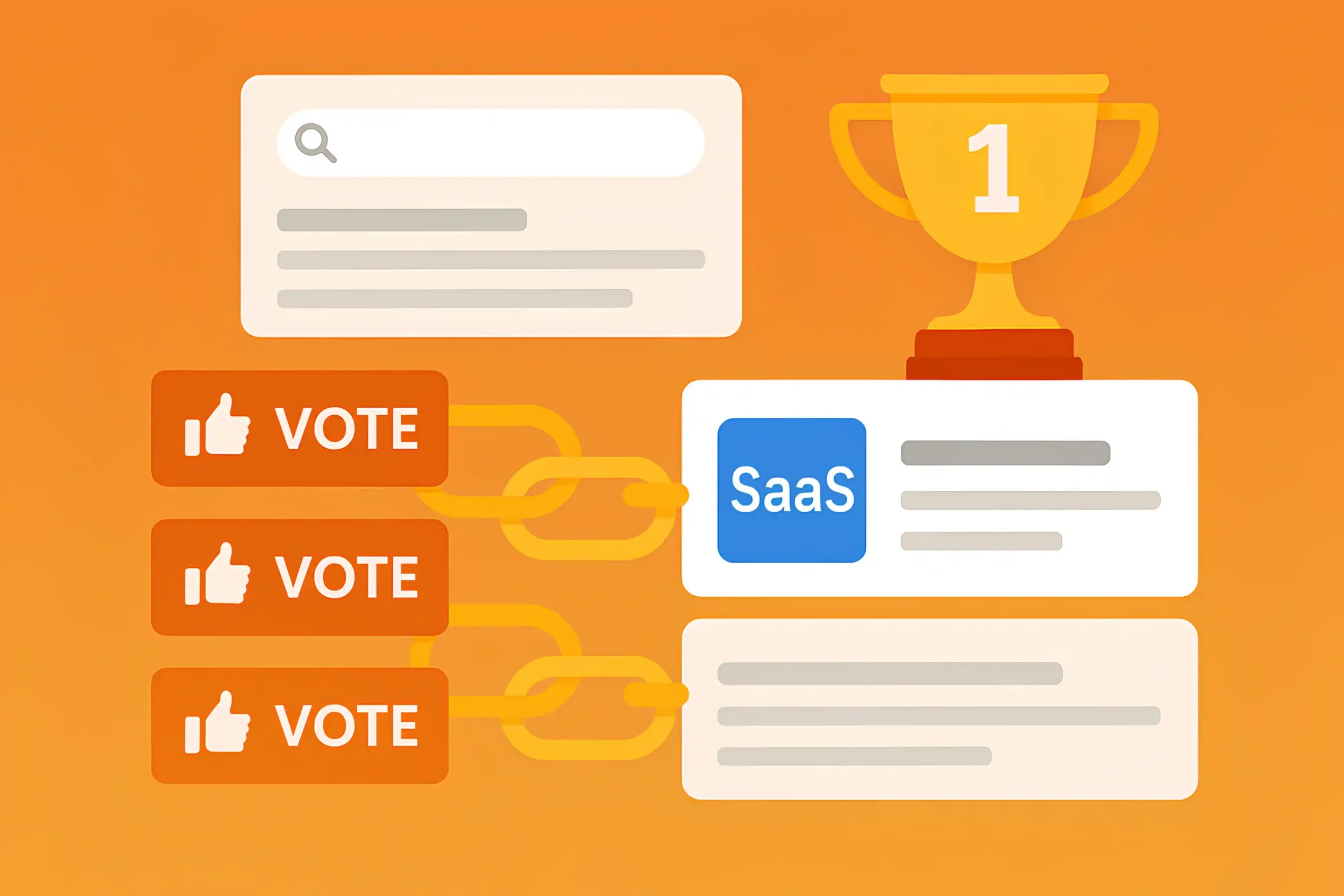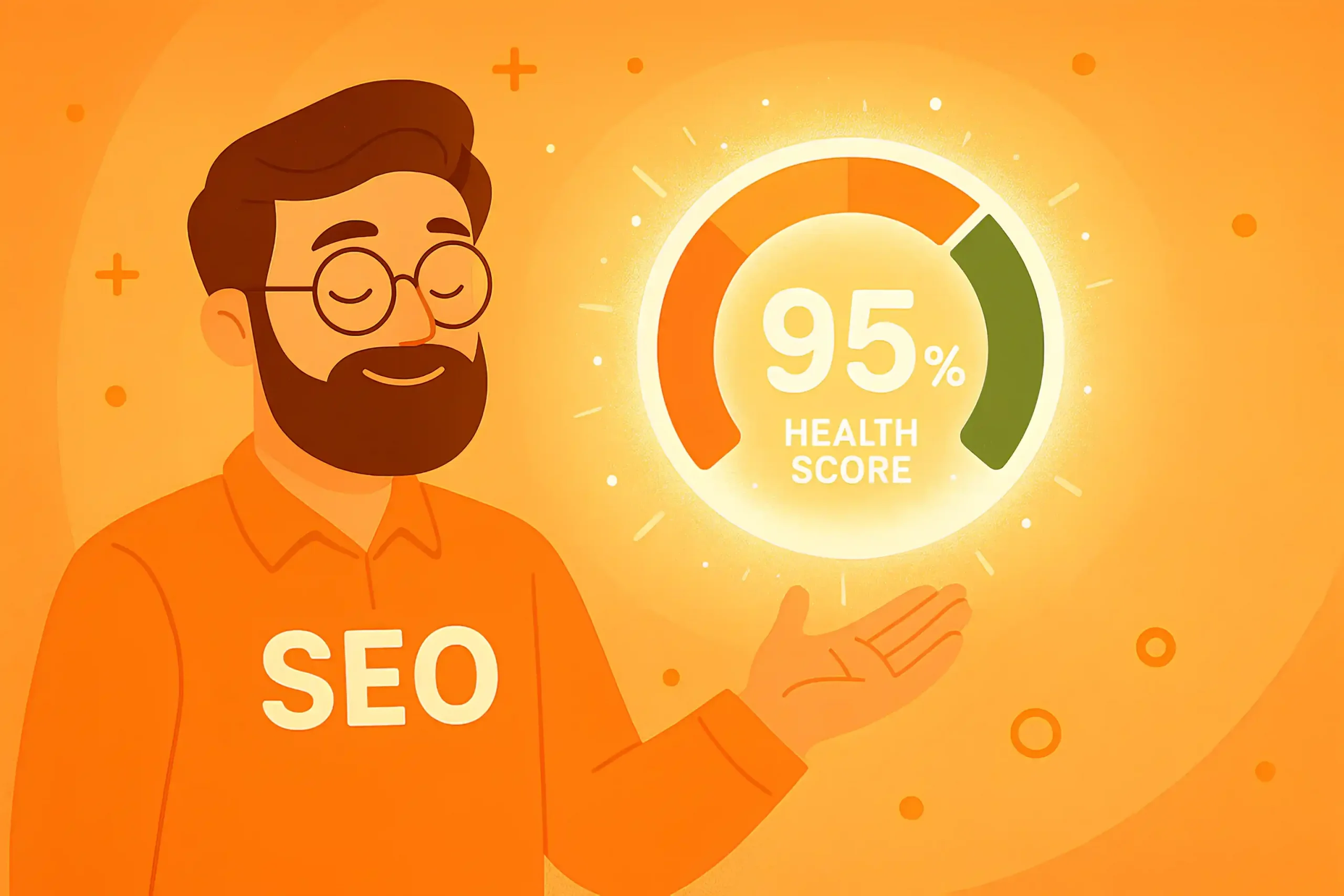Updated October 29, 2025
SaaS SEO: 20 Battle-Tested Strategies for Explosive Growth
I always say, if you want to get experience in SEO, start by applying your skills and knowledge to SaaS. It has been over seven years since I’ve been in SEO, but I took my first SaaS project over five years ago, by chance, when one of the top VPN providers hired me on Upwork.
That project played a very decisive role in my career because, within eight months, our efforts paid off. After that, many SaaS companies started to notice me, and since then, I’ve run dozens of SaaS SEO campaigns.
In this comprehensive SaaS SEO guide, I’m compiling everything I’ve learned: tips, techniques, and strategies, gained while spending a lot of time, nerves, and experiencing joys and disappointments.
Whether you’re a founder, an SEO expert, or someone passionate about SEO, I’m sure you’ll never regret investing ten to fifteen minutes in this guide.
But yeah, it’s better to show you once than tell ten times, so let’s get started.
What Is SaaS SEO?
SaaS SEO is the practice of optimizing a software-as-a-service company’s website to rank higher in traditional and AI-driven search results. The goal is to make sure that when people search for solutions, problems, or features related to your software, your site appears among the top results.
It combines different elements like keyword targeting, on-page improvements, technical fixes, and high-quality content creation, all tailored to the SaaS model.
The focus is not only on driving visitors but on attracting the right type of audience; those who are most likely to try the software, start a demo, or subscribe.
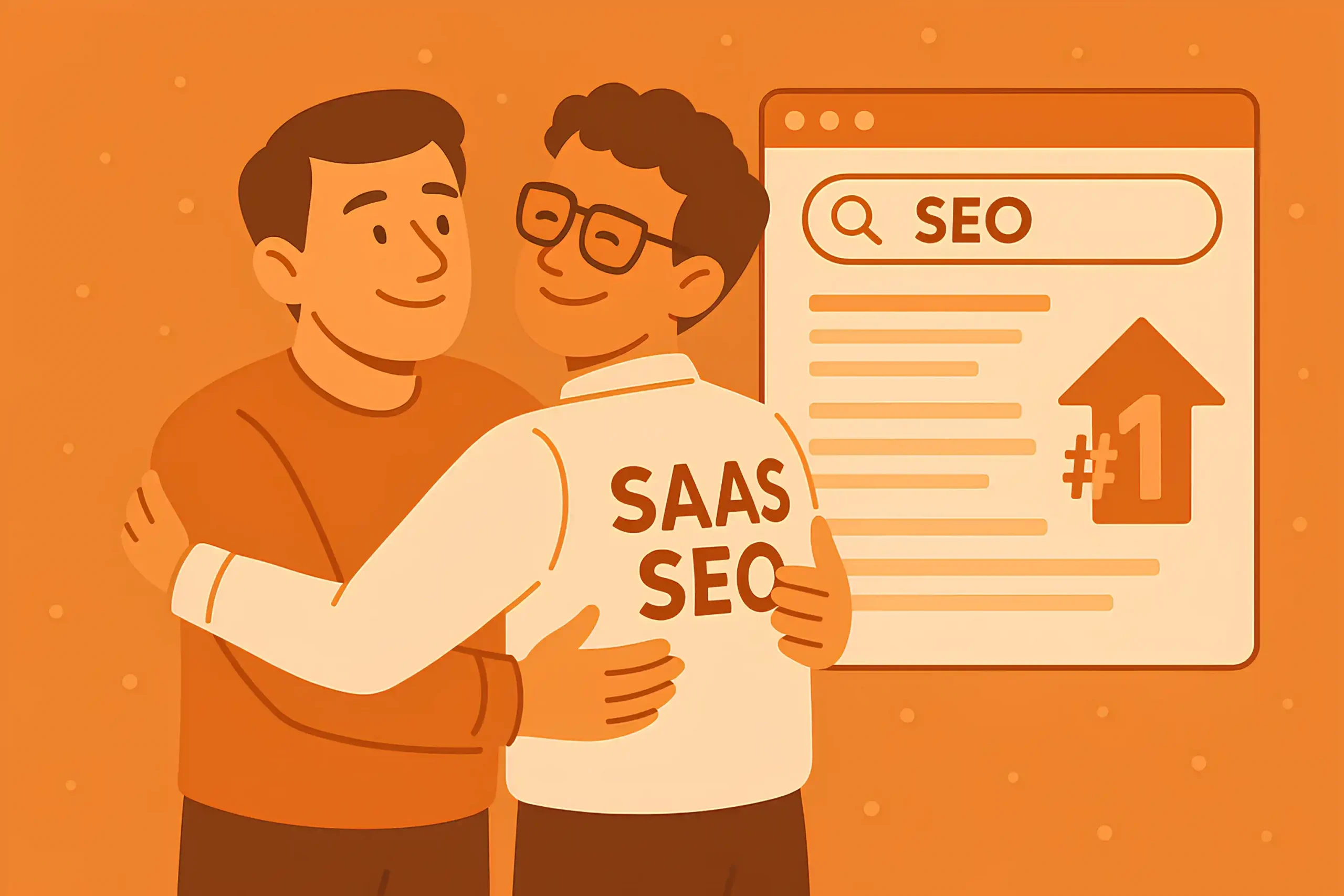
SaaS SEO vs. Traditional SEO
The foundation of SEO never changes. Whether it’s SaaS, B2B SEO, or a local business, the rules that control how search engines crawl, index, and rank websites remain the same. What shifts are the methods you choose, the strategies you apply, and the level of effort required to see results.
SaaS SEO stands apart because of its complexity and the expectations around quality. In a lifestyle business, simple tactics like publishing a handful of blog posts or building backlinks might be enough to bring visibility.
In SaaS, those generic tactics sometimes don’t work. The market is crowded, the buyers are highly informed, and the competition is relentless. To win here, you need sharper strategies, deeper research, and content that doesn’t just fill space but proves expertise and authority.
Top SEO Challenges of SaaS Businesses
In my opinion, one of the biggest challenges SaaS companies face is that they aren’t naive when it comes to online growth. Most of them already know the playbook: SEO, Google Ads, paid social, content marketing, and PR.
This means you’re not selling into a quiet market where competitors are asleep. You’re fighting against businesses that are fully aware of how visibility is built, and they’re often investing aggressively in multiple channels at once.
Competition naturally follows as the next hurdle. Every SaaS niche, whether broad or hyper-specialized, is crowded with companies pursuing the same buyers.

It’s not enough to just rank on the first page; you’re often up against category leaders with massive budgets and an established presence, and that reality forces smaller or newer SaaS brands to work harder, smarter, and with a level of accuracy that leaves little room for error.
The third challenge is the paradox of choice. SaaS SEO offers hundreds of possible entry points: you can rank for problem-solving queries, integration searches, comparisons, alternatives, industry thought leadership, and more, and sometimes it’s tough to decide which ones are important for your growth stage.
20 SaaS SEO Techniques to Scale Signups and Revenue in 2025
What you’re about to read is not another recycled checklist. I didn’t browse through competitors’ blogs, I didn’t scroll through generic guides, and I definitely didn’t ask an AI tool to generate the “usual suspects.” Every single point here is drawn from my own work, real SaaS campaigns where results either made or broke the strategy.
Some of these techniques are simple but powerful; others demand more accuracy and higher effort, but all of them are rooted in practice, not theory.
By the way, if you’re serious about taking your SaaS SEO game to the next level, we can put together a custom proposal for you through our SaaS SEO agency, tailored to your goals, your niche, and your growth stage.
1. Become the Big Fish in a Small Pond
In one of my SaaS SEO case studies, I showed why this is one of the smartest SaaS SEO strategies to outrank competitors and win traditional and AI-driven search results.
Yeah, it’s not a secret; I’ve applied this strategy many times. So, pick one small corner of the internet, squeeze it until it squeaks, and only then think about the next corner.
When I say “small pond,” I don’t mean low ambition. I mean ruthless focus. The week we stopped targeting the sexy head terms and committed to one tight theme, everything clicked.
For example, with an AI video generator platform, we ignored the broad “AI video” circus and went all-in on faceless creation.
Full commitment.
We mapped every angle real creators type at 1 a.m.: faceless YouTube, faceless TikTok, faceless Reels, faceless affiliate videos, faceless scripts, voiceover without showing your face, B-roll sourcing without filming yourself.
We mirrored the language inside the product too: template names, onboarding copy, help docs, so when a user searched “faceless YouTube intro,” the feature, the page, and the tutorial lined up like magnets.
We shipped fast: daily drafts, same-day edits, clean internal links, tight FAQs, and little “prove it” clips that showed the result before the pitch.
Two months in, we were ranking in the top five across the clusters.
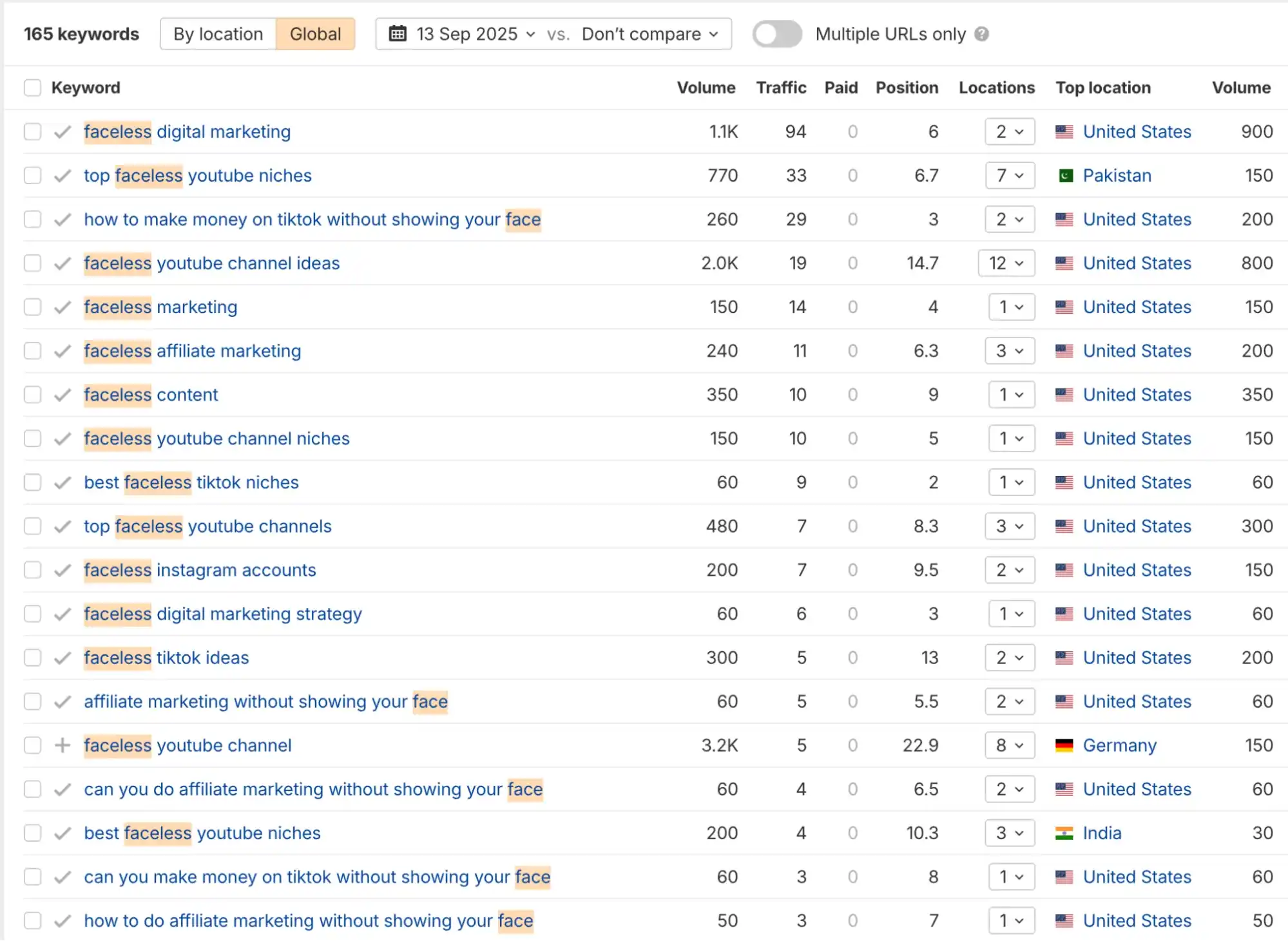
This works because depth builds gravity. Search engines reward a site that shows up over and over for the same family of problems with clean intent, clean architecture, and evidence that users stay, read, and act.
Humans reward it, too.
When every page in a cluster answers the next obvious question, people stop pogo-sticking and start trusting you. The trick isn’t “more content.” It’s one theme, handled like a specialist: titles that match how people ask, intros that get to the point, examples from your product, not someone else’s, and a path from idea → tutorial → template → signup that feels like a nudge, not a shove.
Your pond has to match something your product does better than anyone else. Remember, the giants always leave blind spots. They dominate broad terms but ignore subtopics that feel “too small” for them.
Forget the keyword tools for a minute. Start in Reddit threads, Discord groups, YouTube comments, and niche Slack communities.
When we pivoted to “faceless” content, I first spotted the language not in Ahrefs but in a Reddit group where creators complained about being shy on camera.
2. Scale Programmatically
Programmatic SEO is on every other client’s mind these days, but it’s also one of the most dangerous games in SEO that many business owners don’t fully realize. The danger doesn’t lie in the concept itself but in the execution.
If you go in thinking it’s just about generating thousands of pages and waiting for traffic, you might fail.
Don’t get me wrong, I’m not a big fan of programmatic SEO, but I’d say seven out of ten SaaS companies at least consider it, and in many cases, it’s the right move.
Look at examples like Canva or Zapier. Canva built endless template pages; Zapier leveraged integrations. They’re programmatic at scale, built on strong frameworks, and delivering value that millions of people search for.

If you don’t have the resources, patience, or attention to detail, don’t even start. I always tell my clients, before we even think about this, promise me you’re ready to put real effort behind it.
So, how do you know if programmatic SEO is right for you? If your SaaS has a highly structured product with repeatable use cases like integrations, templates, and industry-specific solutions, it might be a perfect fit.
If your audience is diverse but their search intent follows predictable patterns, you can map those patterns into scalable page models.
Here’s my personal insight: programmatic SEO only works if you treat it as a long-term build, not a quick hack. The companies that win here are the ones that combine scale with craftsmanship, where every page might be generated at scale, but still feels like it was built with care.
That’s why I’ve put together a dedicated guide on programmatic SEO for SaaS, where I go deeper into frameworks, processes, and the pitfalls to avoid.
3. Optimize Your SaaS for LLMs
Just a few days ago, Google confirmed something that changes the game for everyone; they cut the visible results on the SERP from the top 100 down to the top 10.
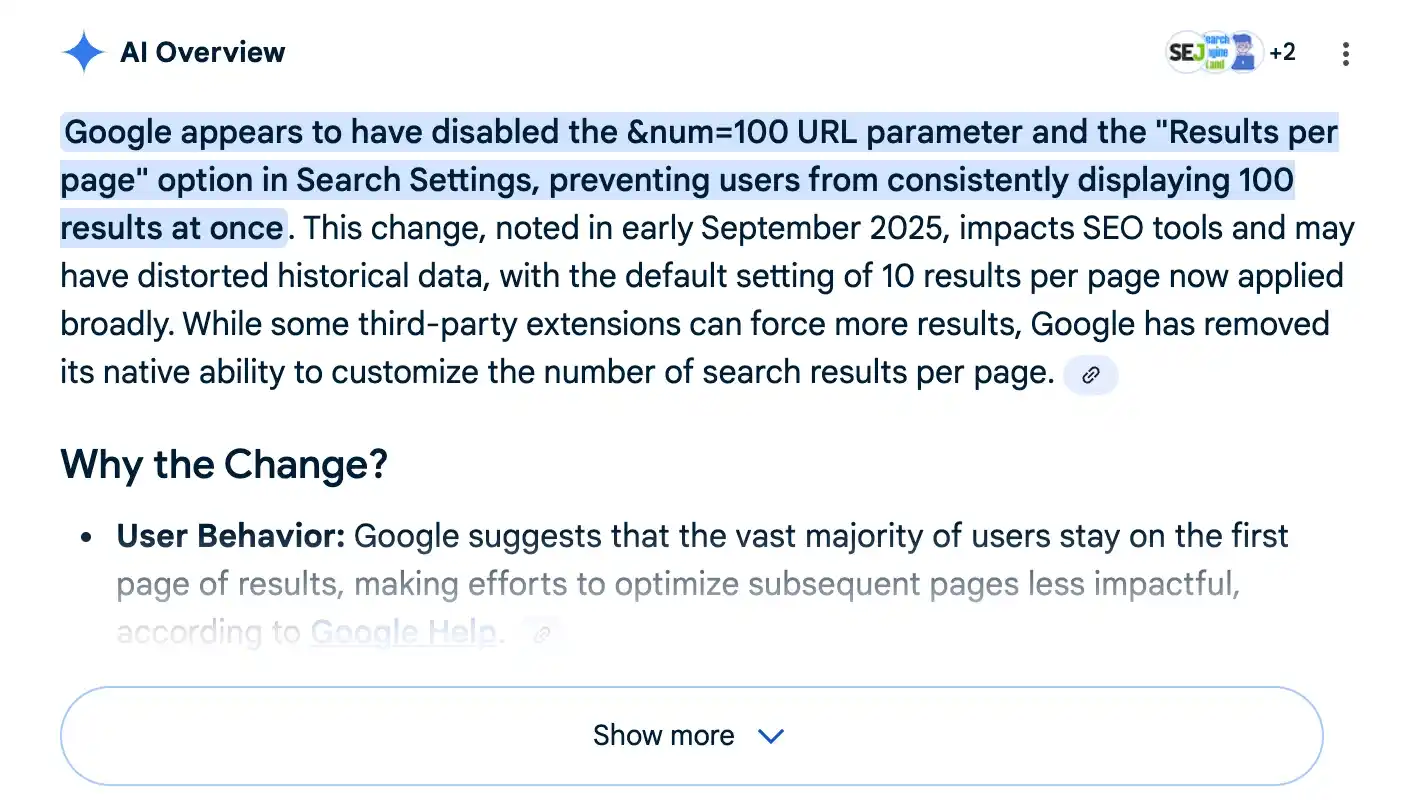
The comfort of “at least I’m on page three” doesn’t mean anything anymore. If you’re not in that narrow slice, you’re invisible. That’s exactly why I always include optimizing your SaaS for LLMs as one of the top strategies.
Traditional search engines like Google and Bing aren’t the only gatekeepers anymore. Large Language Models are already where your potential users are searching for answers.
Many people will tell you that the overall principles are the same, and they’re right to a point. When you optimize your site for traditional search, in about 80–90% of cases, those same techniques also help with LLM visibility.
Clean site architecture, high-quality content, and strong topical coverage all carry over.
But there’s that extra 10–20% that separates the companies that appear in AI-driven answers from the ones that disappear.
That means your SaaS brand (Not only SaaS) needs to be present in reputable sources, referenced in guides, and backed by content that feels complete and trustworthy.
It also means structuring your site in a way that makes it easy for machines to “understand” what you do: clear product explanations, schema markup, FAQs written in natural language, and content that answers real user questions directly.
So, make sure your SaaS website is also optimized for AI search engines like ChatGPT, Gemini, Perplexity, and others.
4. Localize Your SaaS
The English-speaking market is competitive (No words). Every SaaS founder wants a slice of it, and unless you’re sitting on an enormous budget, going head-to-head with the biggest players isn’t always the smartest move.
If you look closely at successful SaaS providers, you’ll notice that many of them eventually build multilingual websites. It’s not because it’s easy, because it isn’t. It’s expensive, resource-heavy, and it requires a lot of planning.
But if you’re serious about scaling globally, it’s one of the smartest strategies you can invest in.
Don’t overwhelm yourself by trying to localize thousands of pages in one go. Start with the essentials. Prioritize your homepage, your product pages (features, use cases, pricing), and your top-performing blog posts.
These are the touchpoints that drive conversions and brand visibility. Once you see results, you can expand the rest gradually.
This way, you’re not burning resources on pages that may never bring measurable SEO ROI.
Another crucial step is identifying which markets deserve your attention. I usually suggest starting with one or two high-value languages: French, Spanish, Portuguese, or German, depending on your niche.
For example, France is often overlooked, but French users strongly prefer content in their own language. The cultural preference can turn into a big competitive advantage for SaaS providers willing to make the effort.
Don’t forget about your organic competitors.
Where are they getting traffic from? What markets are they penetrating successfully?
Even before committing to full localization, test the waters with Google Ads in those regions.
Paid campaigns can reveal whether there’s actual demand before you invest in translations, hreflang setups, and ongoing content localization.
Of course, technical SEO plays a huge role here. Many SaaS companies put in the effort to translate content, only to mess up hreflang tags, URL structures, or CMS settings.
If you’re running your SaaS on Webflow or similar platforms, you need to make sure your localization strategy isn’t just cosmetic. Technical SEO for SaaS becomes even more critical when you expand globally.
By the way, if you’re running on Webflow, I’ve put together a dedicated guide on how to properly optimize SaaS websites for SEO on Webflow. It’ll give you a step-by-step framework to make sure your localization doesn’t just look good, but actually performs.
5. Turn Best Performing Blogs into YouTube Videos
If you have blog posts that already generate qualified visitors, you’re wasting progress if those ideas aren’t on YouTube. Videos work on three fronts at once: they rank on YouTube itself, they can appear in traditional search, and their transcripts get picked up by LLMs that quote, summarize, and recommend sources.
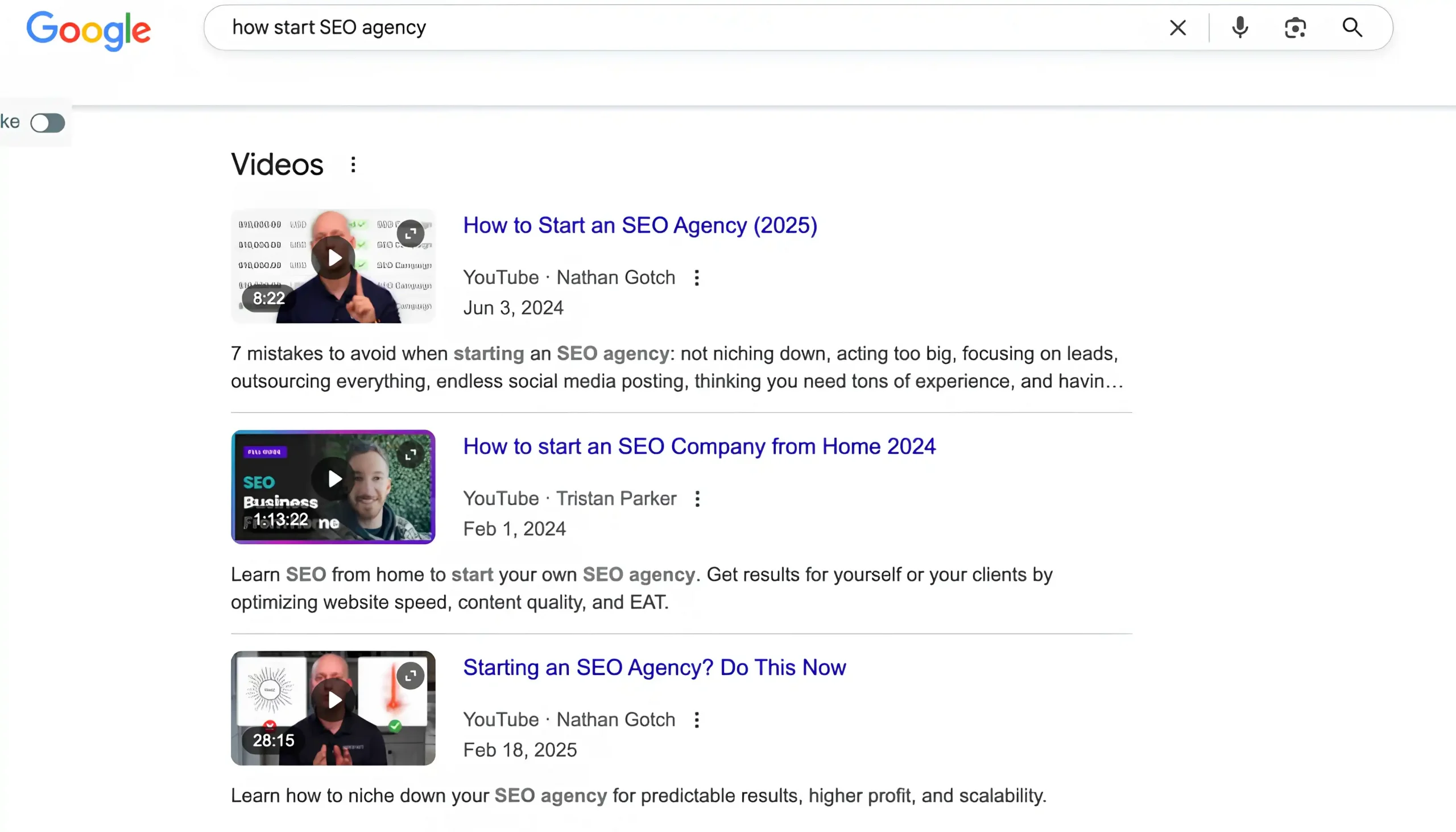
In plain words: one strong video can earn you views, brand mentions inside AI answers, and a steady stream of product-aware traffic that a text-only strategy rarely matches.
Why this belongs in your SaaS plan today: the cost to produce clean, on-brand videos has dropped to pocket change compared to what it used to be. If you can turn a winning post into a 6–12 minute tutorial or explainer for a few dollars and a few hours, it’s almost irresponsible not to.
The key is discipline: real examples, real screens, clear outcomes, and none of that “reading the blog out loud” nonsense.
How to pick the right posts: start with pages that already convert or attract links. Then look for posts built around questions and outcomes, anything with “how,” “setup,” “template,” “compare,” or “best for [use case].”
Long-tail topics tend to shine on YouTube because the intent is crystal clear. Then, cross-check your short list with YouTube autocomplete and a question miner like AnswerThePublic to see the exact phrasing people use.
If searchers keep asking variations of the same pain point, that’s your title, your hook, and your chapter list.
Should you embed the video back into the blog?
Absolutely!
Place it near the top, just after the first outcome paragraph, so readers know there’s a faster path. Add a concise summary under the embed and include a full transcript lower on the page.
Mark up the page with VideoObject schema (title, description, duration, upload date, thumbnail, transcript), and keep performance tight with lazy loading so you don’t blow up LCP.
Done well, you’ll improve time on page, reduce “back button” behavior, and give crawlers and LLMs more material to understand and cite.
A few advanced touches from experience: repurpose one long tutorial into three Shorts that target micro-intents and link them back to the main video.
Localize captions for the same geographies you’re targeting with your site; ship the thumbnail style guide so CTR stays consistent across the channel; and for blog posts that already hold featured snippets, add a chapter that mirrors the snippet structure.
6. Growth Through HARO and Digital PR
I’ll say it bluntly: the same run-of-the-mill backlinks that move the needle in other niches barely work for SaaS, especially if you’re running enterprise SaaS SEO campaigns.
That’s why HARO and Digital PR aren’t “nice to have” here; they’re foundational.
Why I push this so hard: enterprise buyers look for proof you’re credible, stable, and recommended by third parties.
A single mention in a reputable outlet can do three things at once: lift rankings on competitive terms, drive qualified referral traffic, and reduce doubt during security/legal review.
Even brand mentions without a link help: consistent references to your company across trusted domains strengthen your entity signals, grow branded search, and increase the odds you’re shortlisted in “best tools for X” roundups.
Co-citation matters more than most people think.
So, turn your founders and senior PMs into quotable experts on very specific themes: privacy, uptime, pricing models, integrations, and sector regulations.
Digital PR is one of those channels that looks simple from the outside and turns out to be timing, taste, and tenacity on the inside. It isn’t “easy”; you need a creative hook, a moment worth riding, and the discipline to package it fast.
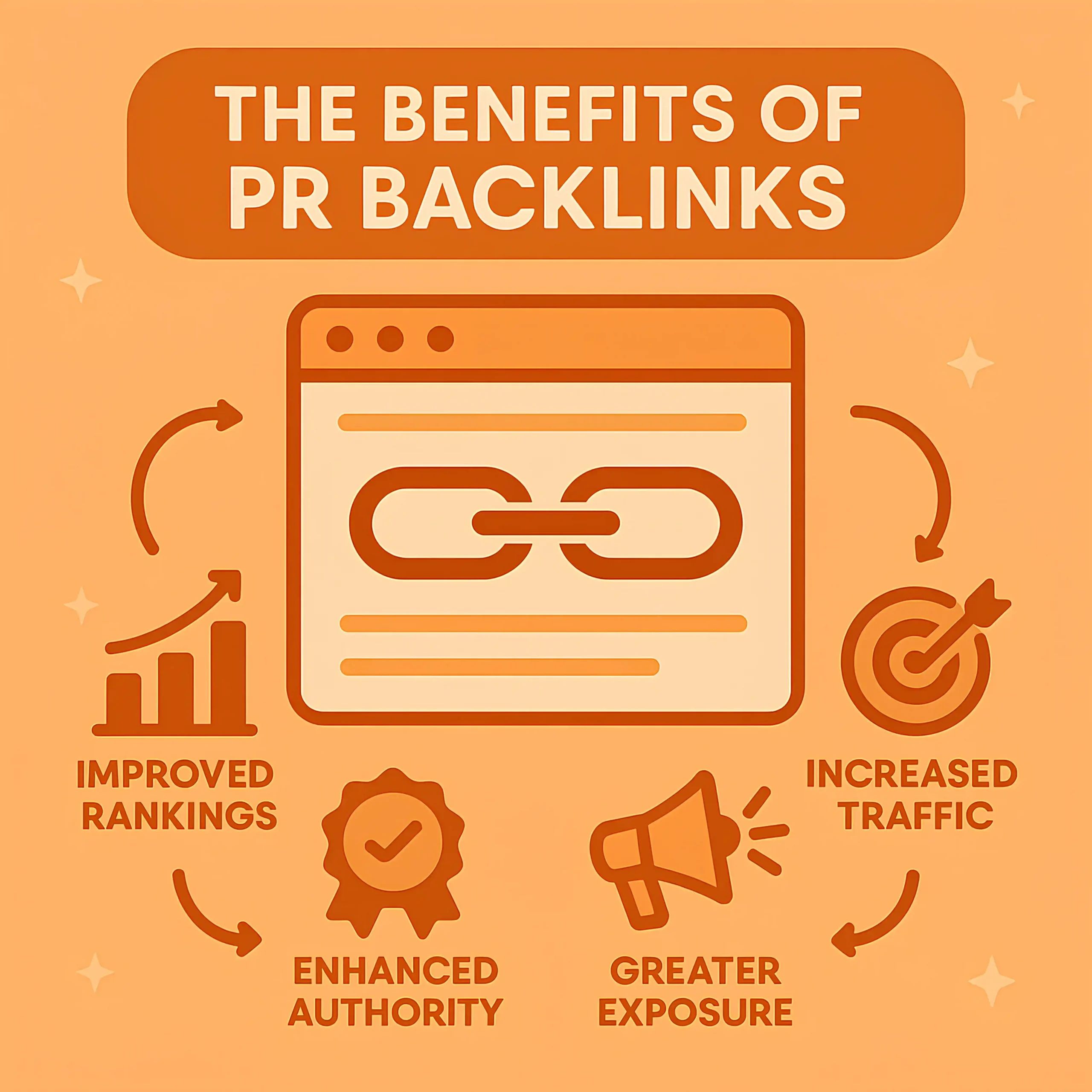
Sometimes you won’t have the in-house muscle to spot the story, craft the angle, and pitch it before the window closes, and that’s a perfectly good reason to bring in a SEO consultant who’s done this dance before.
I’ve shown this in one of my link-building case studies, where one of our campaigns multiplied organic traffic several times over and lifted overall authority across the sections that mattered.
7. Create Linkable Assets
Years ago, when I took on new projects, I’d start where most people start. Now, I think it was a big mistake. If you want to build real authority, you must build the things people can’t help but reference.
Even if you’re not launching them on day one, your link-building plan should put linkable assets at the center.
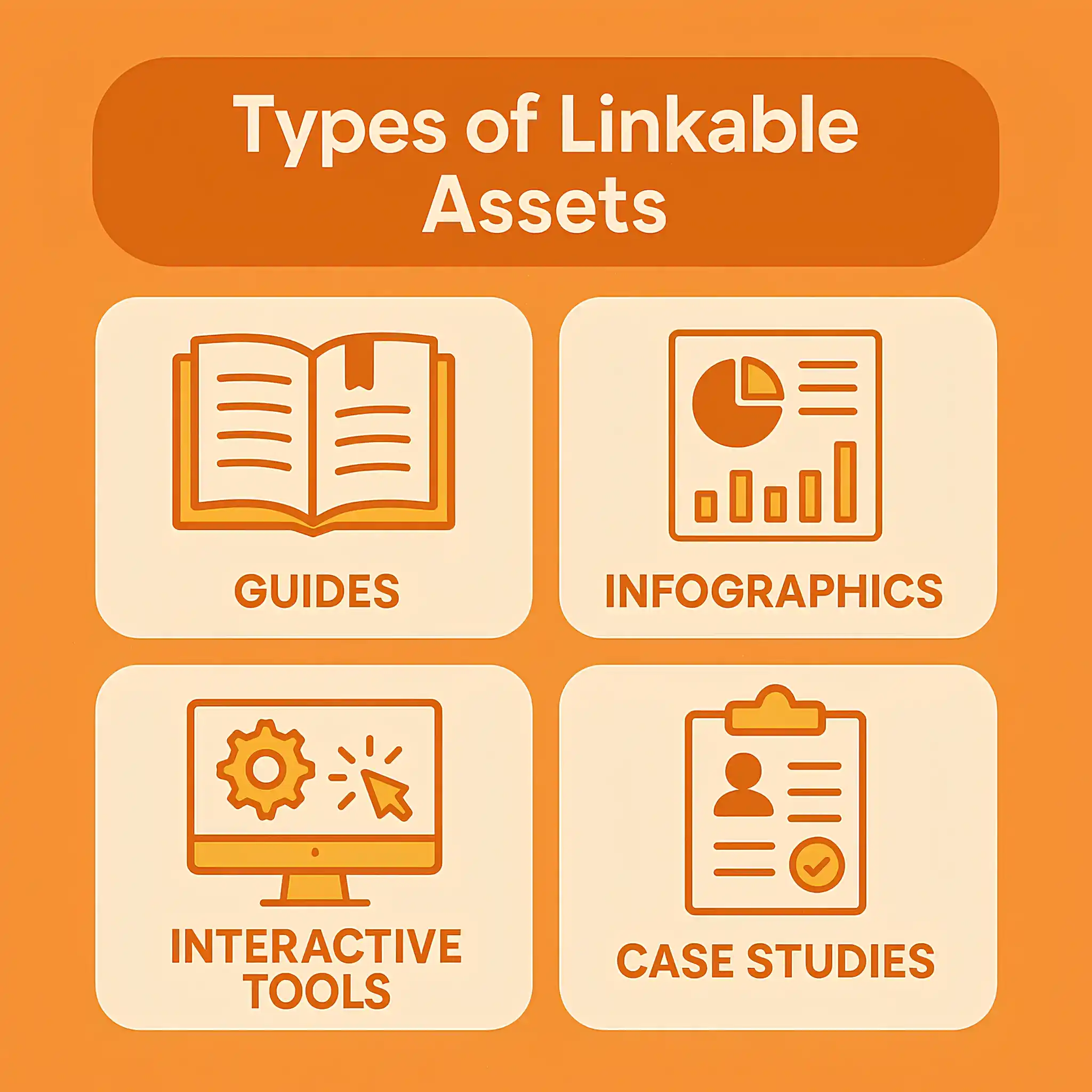
Last year, we partnered with a B2C SaaS that didn’t have a huge link-building budget. So we poured our energy into a few high-gravity assets: industry statistics, a “state of” report based on anonymized usage data, and a small calculator that solved a nagging cost question in their niche.
Six months later, those pieces earned 200+ backlinks without us begging for coverage.

What makes an asset linkable isn’t length, it’s usefulness. Give editors a number they can quote, a dataset they can embed, a methodology they can trust, or a tool that saves them time.
In SaaS, that often means: a yearly benchmark from your product’s telemetry (with privacy handled), a pricing/ROI calculator tied to real assumptions, a template or checklist hub mapped to jobs-to-be-done, or a research page that consolidates stats with sources and original visuals.
Of course, this isn’t the only way to win links. If you want a deeper dive into SaaS link-building: more techniques, smarter outreach angles, research-led ideas, and the playbooks I use, feel free to explore my full guide. It breaks everything down step by step so you can pick what fits your product and ship it fast.
8. Set Up Technical Foundation
Every year, I get more convinced that most “fixes” people obsess over: endless Search Console warnings, tweaking canonicals on pages that shouldn’t exist in the first place, won’t put you on top.
Search systems think differently now. I’ve tested the usual suspects, tightened the obvious screws, and, frankly, the needle barely moves.
So here’s how I treat technical SEO for SaaS. First, guarantee discoverability: clean, fetchable HTML for all core pages (features, use cases, pricing, docs), proper 200s, and no accidental noindex or blocked paths in robots.txt.
Keep a clean, accurate XML sitemap (or a few by type), with real lastmod dates and only indexable URLs. Collapse duplication at the source; one URL per thing.
Next, protect your crawl budget. Cut thin or orphaned pages rather than trying to bless them with canonicals. Prune pagination and tag archives that add zero value.
Fix internal linking so your revenue pages aren’t five clicks deep. Make redirects single-hop and permanent. Keep your response codes honest: 200 for real, 301 for consolidations, 410 for dead ends. Check logs to see what bots fetch, not what you think they fetch.
If product pages depend on JavaScript to reveal copy or links, serve a version that’s readable on first load. Keep performance sane: fast TTFB, predictable LCP, no layout jumpiness. You don’t need a perfect score; you need a site that loads quickly and consistently so crawlers can get more done per visit and users don’t bounce.
9. Improve E.E.A.T. Factors
If an article just rephrases what’s already ranking, I’d rather not publish it. Paraphrasing without real expertise makes no sense. That’s why I don’t hand my blog to random writers.
People come for judgment, not summaries. With generic overviews answering every evergreen question, the only content worth reading is the kind that shows real experience, clear opinions, and proof.
So, strategy number 9 – improve your Google E.E.A.T.
Here are some tips
Create a “founder hub” on your domain: a permanent bio page with a real headshot, credentials, talk videos, press quotes, and links out to consistent profiles (LinkedIn, X, Crunchbase, Product Hunt, GitHub if relevant, conference speaker pages).
Mark it up with Person schema (sameAs, jobTitle, worksFor, alumniOf). Link that page from the homepage footer and bylines. Keep the founder’s name identical everywhere (no nicknames, consistent middle initial).
Every article gets a named author with a short credentials block under the title and a full author page in the footer.
Add reviewedBy for sensitive posts (security, compliance, pricing).
Use Article/BlogPosting with author, reviewedBy, dateModified. Tie authors to their Person pages via @id so the graph is clean.
Aim for analyst blogs, vertical trade media, respected newsletters, and comparison pages.
Short, fast expert quotes with a datapoint from your usage (safely anonymized) win more than generic opinions.
Keep G2/Capterra profiles complete and consistent with your site (copy, categories, screenshots). Encourage customers to use their full names and roles in reviews (real people = real trust). Link these from your author/company pages (sameAs).
Editorial policy + version history
Publish a plain-English editorial policy (expert authorship, primary sources, testing standards). Add a short version history at the bottom of major guides. It signals rigor.
10. Build Free Tools
I love traffic from product and use-case pages (everyone does), especially when they’re bottom-of-funnel. But I’ve learned this over and over with SaaS teams: a small set of useful free tools can become the quiet engine that feeds those pages all year.
They attract people at the “I’m figuring things out” stage, keep them on your site a bit longer, and make them trust you before you ever ask for a signup.
Why this works is simple. A tool solves a tiny job in seconds. If you’re B2B, it’s even better: buyers share tools with teammates, PMs bookmark them, and editors link to them in roundups.
Last year, for a B2C SaaS client in the AI video generator space, we went all-in on free tools. We developed 20+ free templates, 20+ simple calculators (E.g., TikTok Coin Calculator, CPM/CPV, subtitle timing), and hundreds of quick utilities like video resizers, compressors, and format converters.
Look at this:
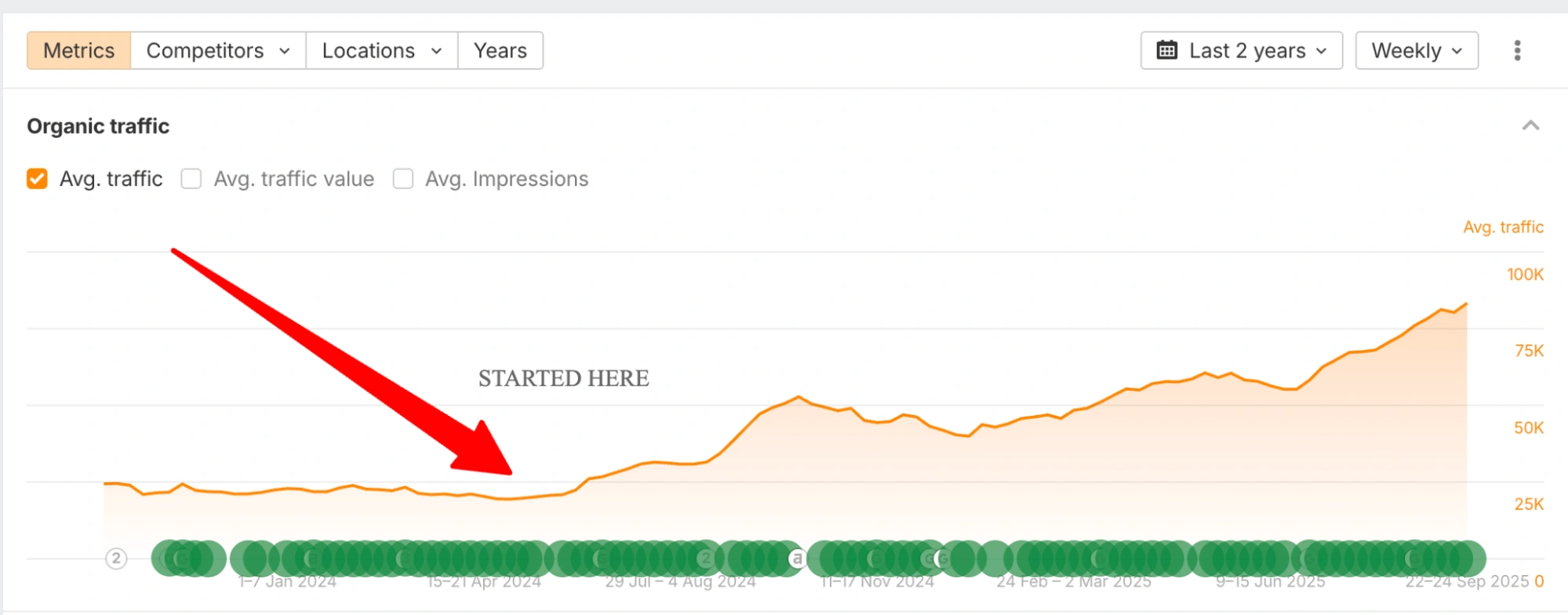
Sometimes, some SaaS websites only show their value after login (As it was in our case).
In those cases, a free tool gives people a taste of the workflow without asking for an account. That extra minute on site; to try, see, and nod, does more for trust than a thousand words of copy.
A few things that matter more than people think:
Give the tool its own page with a short explainer, examples, and a text result users can copy. Add schema (SoftwareApplication or Tool) so machines “see” it as a thing, not just a pretty page.
Ship downloadable assets (CSV, PDF) with a tiny watermark or footer link; those files travel and bring people back.
Localize your top tools for the markets you care about; localized tools attract links you’ll never get with a single English page.
11. Use Schema Markup for SaaS
I’m not trying to invent something new here. Schema won’t rank you to the top by itself, but it’s still one of the cleanest ways to help search engines and assistants “get” who you are, what your product does, and which pages are important.
If you’re on Webflow, WordPress, or a custom setup, the approach changes a little. On some CMSs, there are some nuances you should consider. For example, Webflow requires some custom coding if you do a dynamic schema.
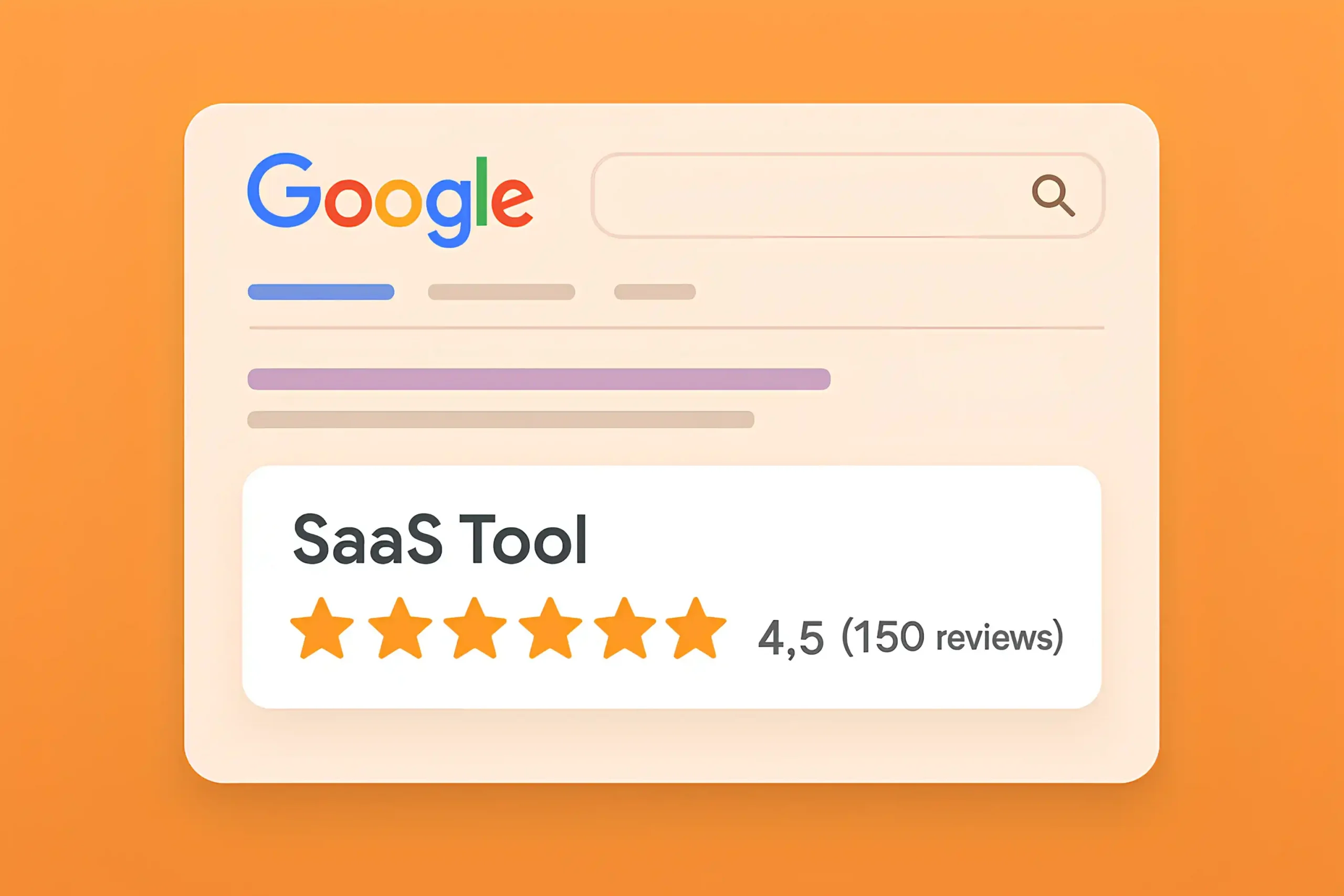
Your company should look like the same company on LinkedIn, Crunchbase, Product Hunt, and the review platforms your buyers check.
For content types, mark up what helps a buyer make a decision. Your articles and guides should be marked as articles; your success stories should read as real case studies with a named author and a “reviewed by” line; your FAQs should be actual questions and answers from sales/support.
If you have demos, tutorials, or explainers, treat each as a first-class page: a clear title, a one-paragraph promise, chapters, and a transcript.
If you operate in multiple countries, keep the company identity at the Organization level and only use “local business” when you have physical offices serving local customers.
If you do have offices, give each location its own simple page with real details (address, hours, phone) and keep the story consistent across your site and your profiles.
If you’re remote-only, don’t pretend to be “local”; you’ll create more confusion than benefit.
Make your features and differentiators easy to lift: short, unambiguous names; one-line definitions; pages for your top integrations; a tidy “About/Press” hub; and consistent founder and company profiles around the web.
Add short Q&A blocks to key pages that answer the exact questions buyers ask in sales calls.
Keep pricing, limits, and security pages painfully clear and up to date. When the facts are easy to read and line up everywhere, both people and LLMs repeat them back accurately.
12. Always Follow Industry Trends
In SaaS, timing matters more than volume. You can publish a hundred evergreen posts and still get outrun by one well-timed piece that taps into a real surge of interest. Evergreen is fading at the top of the funnel; AI overviews and LLMs swallow broad questions.
I treat trend-hunting like an operating habit, not a side task. Know what your customers watch, know which releases can unlock new use cases, and keep a short runway from idea to publish to product.
A recent example says it all. One of my SaaS clients spotted early chatter that Google was about to drop Nano Banana for image generation. We didn’t wait for the press cycle. We wrote a tight primer, created a focused landing page, grabbed the API, and put a simple hands-on demo behind a clean CTA.
Look, the result is crazy:

Traffic followed, signups followed, and we were already ranking and cited while others were still drafting “what is it” takes. That’s the play: meet the trend with substance, not hype, and give people something they can try right now.
Keep an editorial slot open each week for breaking topics. Keep design assets ready so a new page doesn’t stall on visuals. Keep engineering on call for lightweight demos.
13. Target API Keywords
When I say “API keywords,” I’m talking about the search terms developers type when they’re trying to ship something today: “{your product} API,” “{your product} webhooks,” “{your product} API pricing,” “rate limits,” “SDK Python,” “OAuth,” “status codes,” “quickstart,” “Postman collection,” “OpenAPI,” “errors.”
They’re people with an editor open and a deadline. That’s why targeting them is one of the cleanest SEO plays a SaaS company can run.
This strategy is great, especially if you run B2B SaaS SEO campaigns, because the intent maps straight to revenue. A dev who lands on “{your app} API quickstart (Node, Python, Go)” isn’t “researching,” they’re integrating.
If your pages answer the exact question, show a runnable snippet, and point to a free key with sane limits, you win the account before a sales call even happens.
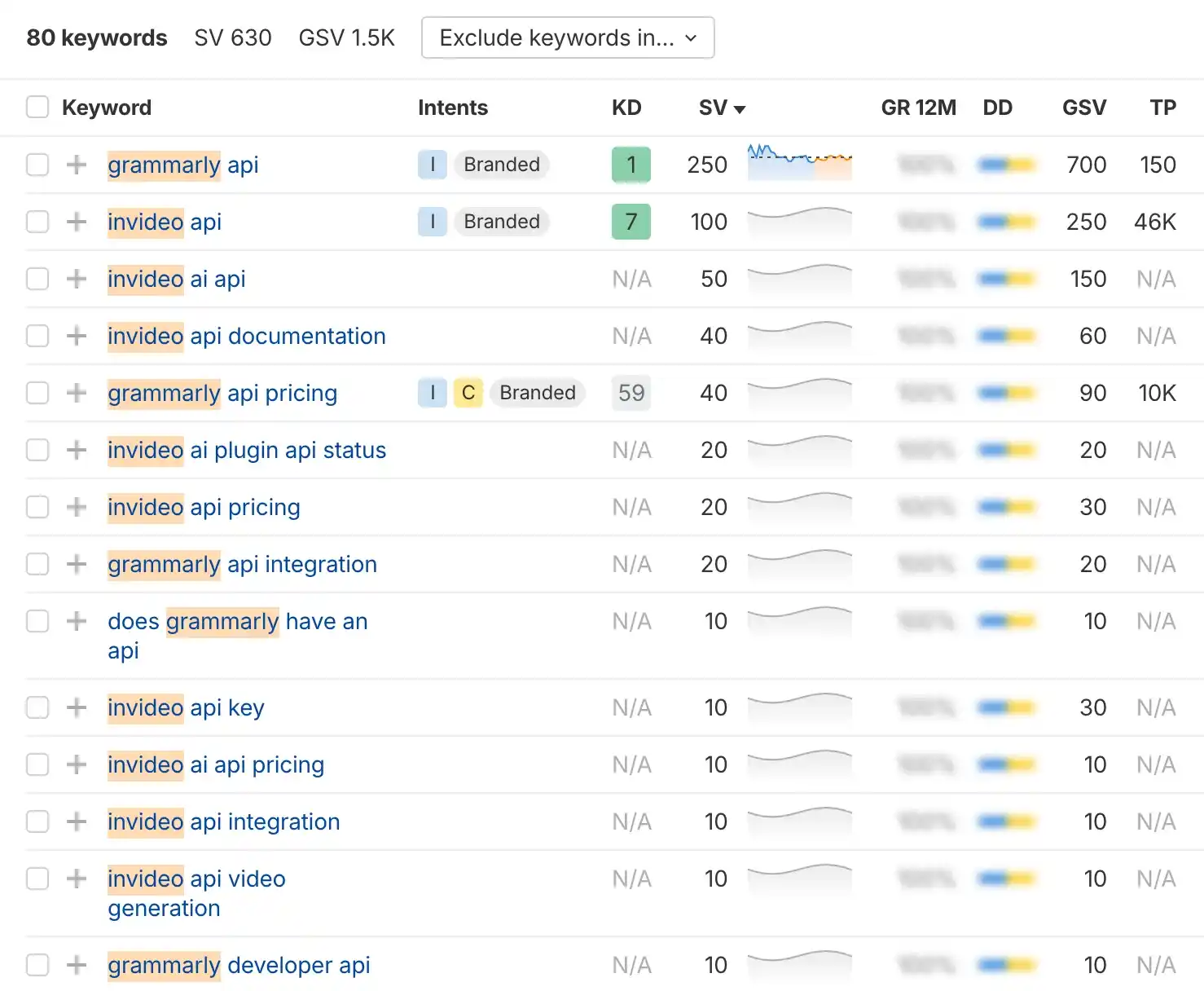
It also works for B2C if your product has a programmatic side. In the AI video space, for example, “video generation API,” “captioning API,” or “TikTok upload API” bring in small studios and agencies who will never sit through a demo but will happily wire you into their pipeline. They find you through the API door, not the homepage.
One example I like to run is the “webhooks” cluster. Start with a clear “{Your Product} webhooks” page that explains events in human language and shows a minimal receiver in Node and Python.
Link out to child pages for each event family with payload examples and retry behavior spelled out. From there, tie it back to real jobs: “automate billing,” “sync analytics,” “trigger alerts.”
Those pages rank for the exact terms people use when they’re wiring systems together, and they convert because the next step is obvious: grab a key and try it.
If you’re exploring B2B strategies and want a plan shaped around your product and sales motion, our B2B SaaS SEO agency can help. Get in touch for a tailored roadmap.
14. Target Keywords with Low KD Score
This is one of my favorite keyword research techniques for SaaS. It works for SaaS (Also for other industries), and I just could not miss it. However, Ahrefs KD 0” doesn’t mean you’ll be #1 tomorrow. I’ve tried those and wasted time.
Here’s how I do it.
I drop my seed term into Ahrefs. Next, I filter the keywords for which there is at least one website with a maximum DR of 10 (The DR score is up to you) ranking in the top 5 (excluding exact match domains).
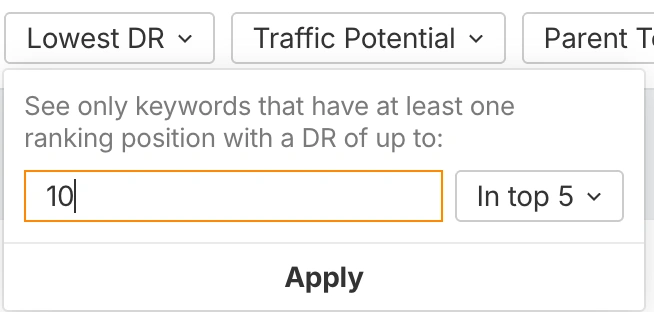
The real opportunities are here.
Then I ask myself one question: can we be the best answer here in a week? If yes, I go all in. If not, I move on without guilt. Picking the right fight is a skill.
You can also grab easy wins by going after “no-volume” topics that you know are coming. This works especially well in B2B. If you’re 100% sure people will search it, new feature names, fresh standards, partner launches, publish first.
I’ve done this many times: zero volume in tools, real traffic a week later, and you own the query before anyone else wakes up.
You can join our keyword research course; straight tactics, real examples, and templates you can use the same day.
15. Start SaaS Academy
Most SaaS companies don’t even think about building an academy. They’re busy writing “10 benefits of…” blogs or pushing product updates, but they ignore the fact that an academy can do what their blog never will: turn someone curious into someone who trusts you enough to sign up.
But, who does this work for? If you have a SaaS with a learning curve like analytics platforms, SEO tools, CRMs, project management software, or video editing tools, you’re the perfect fit.
Users in these spaces are always asking, “How do I use this to grow my business or save time?” That’s where the Academy answers those questions in detail, and while you’re teaching, you’re also selling without even selling.
I’ve seen this play out with companies like Ahrefs and HubSpot. People visit there looking for answers, they stick around, and before they know it, they’re investigating the product.
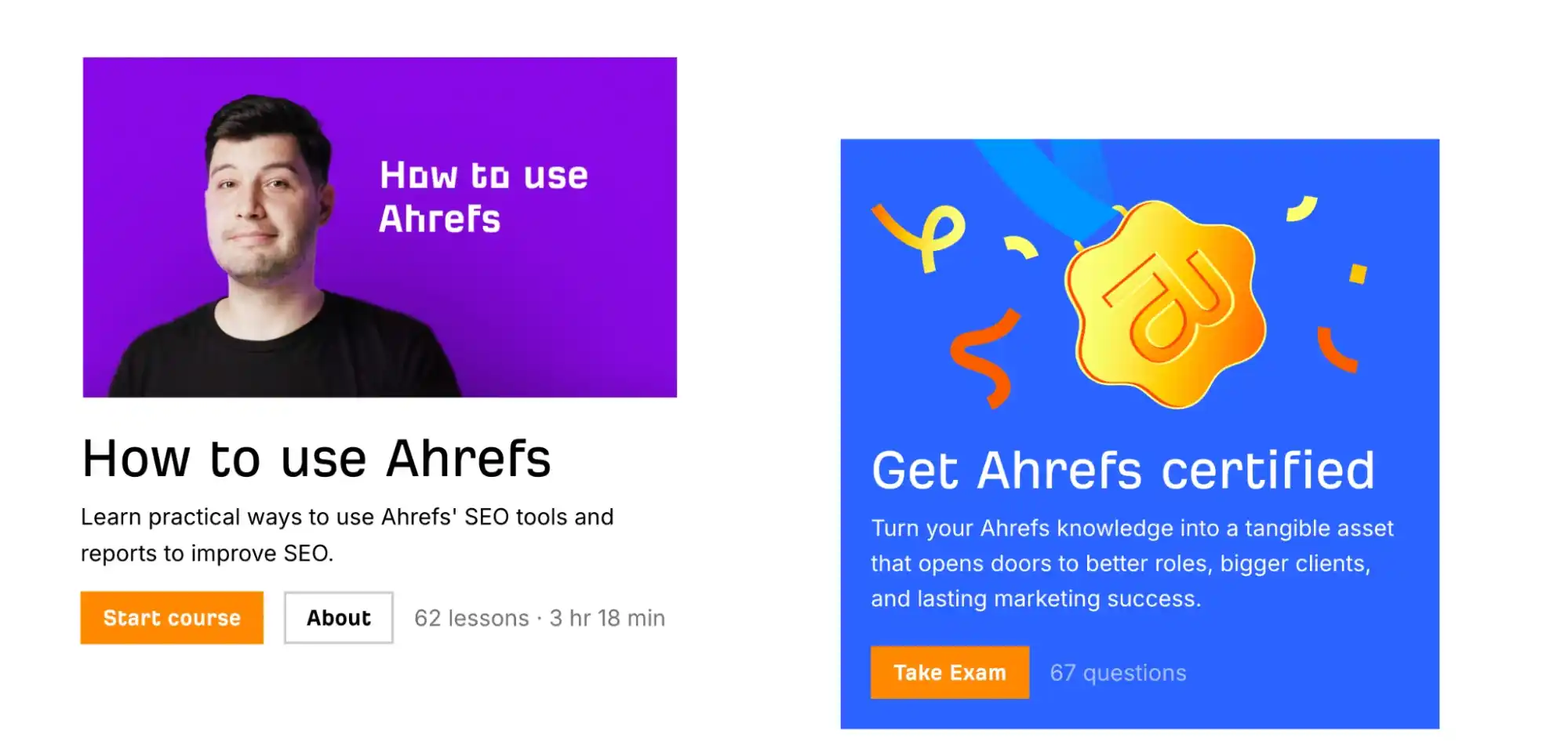
However, not every SaaS should do this. If your app is dead simple, like a meme generator or a to-do list app, building an academy is a waste of time.
There’s nothing to teach. Also, if you don’t have the resources to maintain it, don’t start. An empty academy makes you look lazy and kills trust.
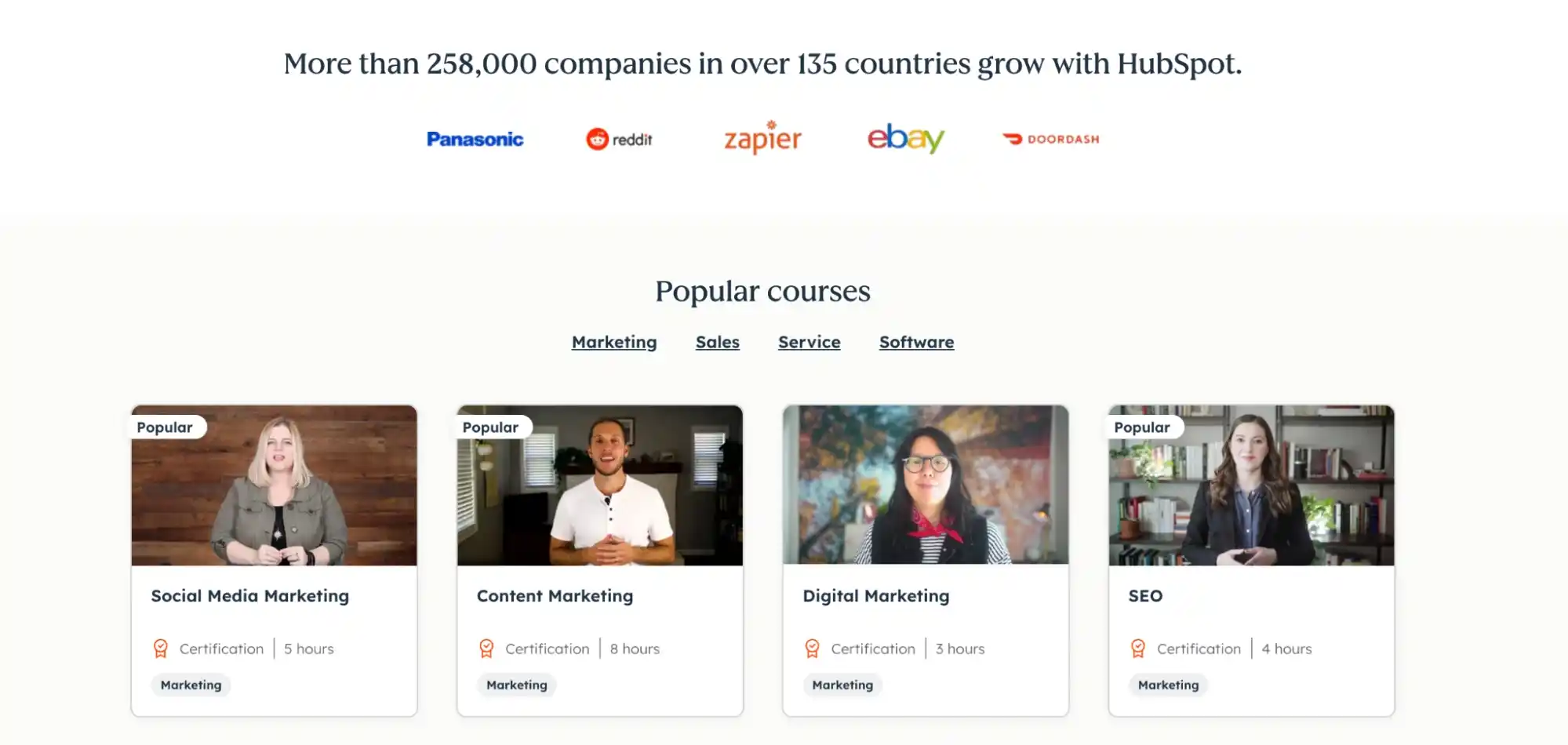
If you do it right, you’re not just building content, you’re building a funnel. Readers become students. Students become sign-ups. Sign-ups become loyal customers.
SEO-wise, a strong academy gives you topical authority. Google sees you’re not writing generic content but building a library that covers your industry from A to Z.
That means better rankings across the board, not just for academy articles but for your product pages too.
16. Invest in Brand Reputation
Many of our clients come and say that they need SEO right away, but they’ve never done anything to build their brand. No social media, no digital PR, no paid ads, nothing. They expect SEO to work on its own, but it doesn’t really work like that.
You can have great content and even high authority backlinks, but if nobody knows your brand, Google won’t trust you as much as it trusts companies that already have a real presence online.
When people search your company name, that’s a good sign. It means you’re building awareness. Branded search might not be a “ranking factor” in a direct way, but it’s a strong signal that your brand is recognized (IMO).
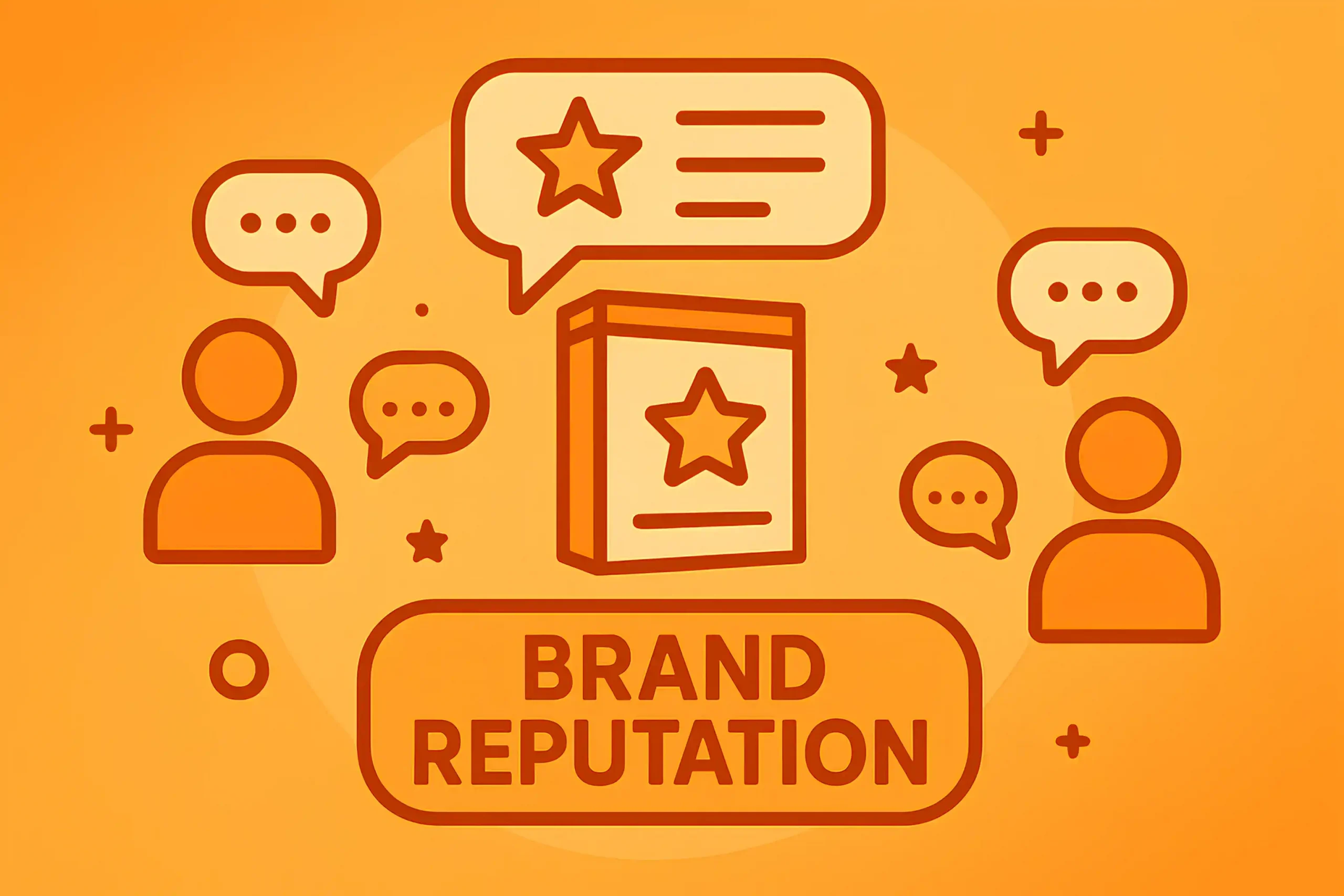
So before you go all in on SEO, make sure your brand exists outside your website. Do some PR, post on social, and run a few ads. Get people talking. It all connects in the end.
I wouldn’t call this a typical SEO strategy, but for SaaS companies, it’s one of those things that quietly makes everything else work better.
17. Track Competitors Aggressively
No matter what kind of SEO you’re doing: SaaS, dental SEO, healthcare, anything, tracking your competitors is part of the job. But in SaaS, it’s a completely different story. Things move insanely fast here. You can’t just check what your competitors are doing once every few months and call it a day.
In SaaS, everything changes within hours. One day they’re targeting the U.S., and next week they’re launching in Germany or Japan. They might release ten new blog posts in two days, create a new free tool, update their pricing, change their entire site structure, or start building links for a fresh keyword cluster.
SaaS teams are always testing something: new features, landing pages, or messaging. If you’re not paying attention daily, you’ll miss the patterns that explain why they’re growing faster than you.
That’s why I always recommend having a solid competitor tracking system, something that logs new backlinks, content updates, pricing changes, and product launches.
In such cases, you can consider AI SEO services to automate half of it. Either way, don’t rely on checking every three months. That’s way too slow for SaaS.
If you want to stay ahead, you need to see what’s moving in real time. And yeah, if that sounds like too much, you can always get help from a SaaS SEO agency that already tracks hundreds of competitors daily and can handle all that data for you.
18. Focus on 2-3 Use Cases and Dominate Them
If you’re not Elon Musk, you can’t handle everything at once, even if you have a great team. SaaS founders try to target every possible use case and every audience at once (Honestly, I understand them, especially SaaS startups), thinking it’ll bring faster results. But it usually does the opposite. It slows everything down.
In SEO, focus is power. Pick two or three use cases that make the most sense for your product, the ones where you can solve real problems better than others, and go all in.

Next, create content around them, build backlinks that support those topics, and make sure your product pages and blog posts align perfectly. Once you dominate those areas, then you can expand.
We did this for one of our SaaS clients in the analytics space. Instead of targeting every possible keyword under the sun, we focused just on two key use cases, marketing analytics and reporting automation.
Within 4.5 months, they completely owned those topics. Rankings shot up, conversions doubled, and from there, scaling into other verticals became ten times easier.
That’s why I always tell SaaS companies: don’t try to look big right away. Look strong in one area first. Build your authority around a few use cases, let Google see you as a clear expert, and then scale from there.
19. Expand BOFU Content Aggressively
After all the new AI stuff: Google’s AI Overviews, ChatGPT, Perplexity, you name it, a lot of SEO “gurus,” even the well-known ones from Ahrefs, SEMrush, and Moz, started saying that top-of-the-funnel content is dying.
To be honest, they’re not completely wrong. Articles like “What is SEO,” “What is SaaS,” and “How does project management work,” are the first to be replaced by AI summaries.
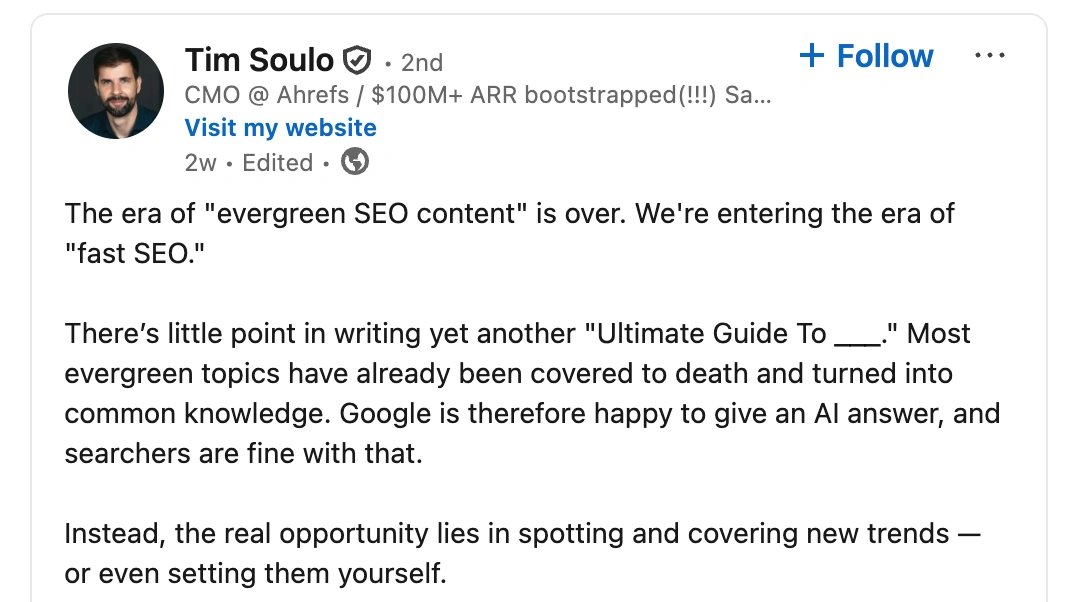
As said, people get their answers right on the search page, and they don’t even need to click anymore.
I don’t think it’s happening at full speed yet, but it’s definitely coming. That’s why I believe SaaS companies should go all-in on bottom-of-the-funnel content now.
AI can’t replicate a founder’s insight, a detailed product comparison, or a real case study that shows how something works in practice.
When people are comparing tools, checking prices, reading reviews, or looking for alternatives, that’s when they want depth and credibility.
They don’t trust an AI summary to make a buying decision for them.
We’re talking competitor comparisons, pricing pages, case studies, product reviews, detailed breakdowns, anything that helps a potential customer decide between you and someone else.
20. Retarget BOFU Content Readers via PPC
Once you’ve built your bottom-of-the-funnel content and start seeing traffic coming in, especially to pages like competitor alternatives, pricing comparisons, or detailed product reviews, that’s your moment.
Those visitors are already in buying mode. They’ve compared tools, read reviews, and now they’re just deciding who to trust.
It’s the right time to retarget those exact users with simple, direct campaigns that position your product as the best choice. You don’t need a huge budget to make it work, just smart targeting.
A lot of SaaS companies spend months writing content, ranking well, and getting traffic, but never retarget it. It’s like filling a bucket with holes. You can easily double your conversions by combining both strategies instead of treating them as separate. That’s where SEO vs PPC becomes a real discussion. SEO brings in the traffic; PPC closes the deal.
Types of Content Best for SaaS SEO
If you want to create content that brings not just traffic, but actual sign-ups and customers, you need to understand what kind of content drives real results. Once you find what works, you can turn it into a repeatable process or framework that keeps generating leads month after month.
After working with dozens of SaaS companies, I’ve seen patterns that repeat. The following types of content always perform better; they attract the right audience, rank faster, and convert higher:
B2C vs. B2B SaaS SEO
In general, B2B and B2C SaaS SEO aren’t that different. The main concepts are the same: link-building, content creation, technical SEO; everything I’ve mentioned above applies to both. But there are a few small details that can completely change how you approach things.
The first one is the buyer journey. In B2C SaaS, the process is usually short. People see a tool, check a few reviews, and decide quickly. But in B2B SaaS, it’s longer and way more complex.
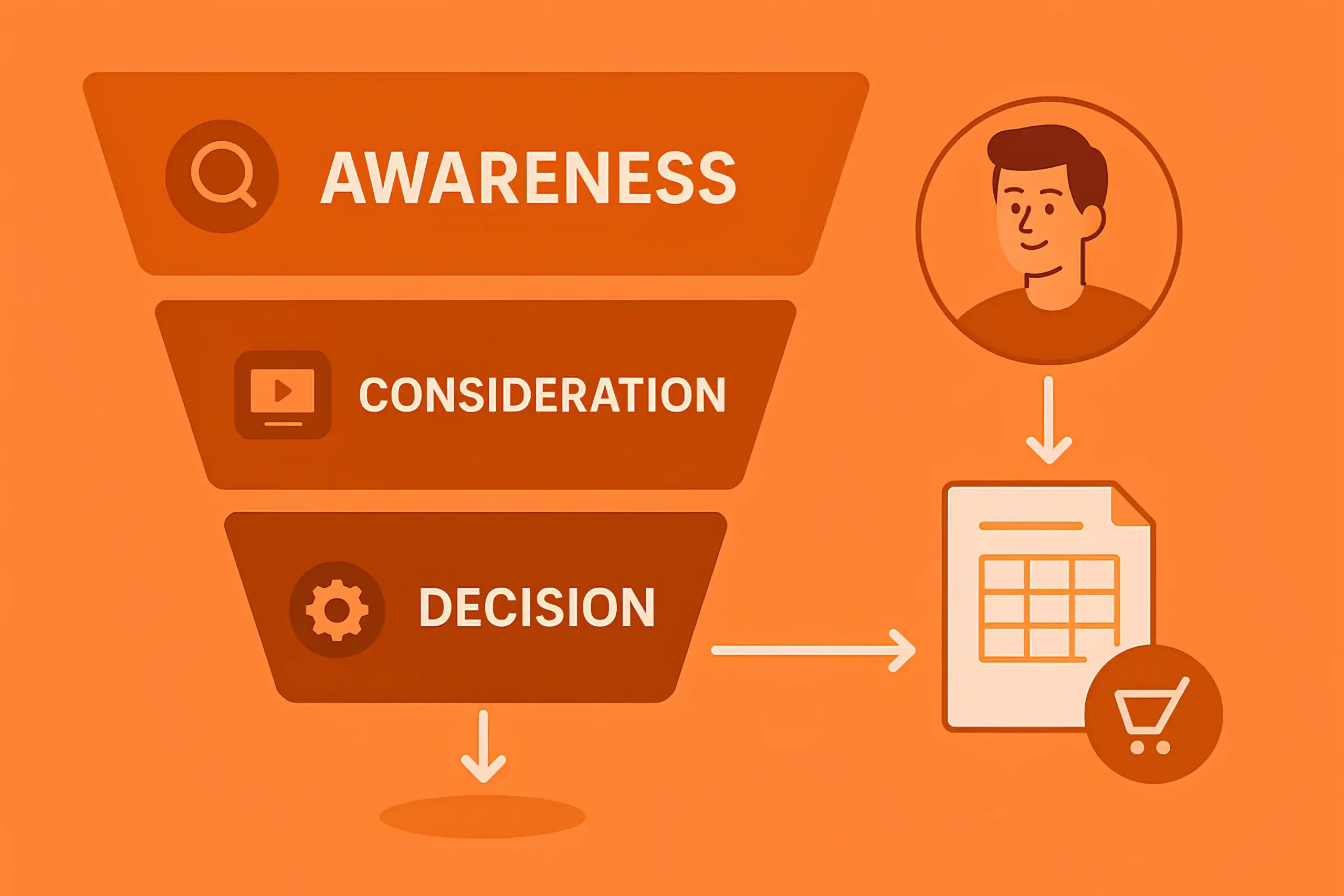
You’re not convincing one person; you’re convincing a team, sometimes a manager, sometimes the whole department. So your content should reflect that.
In B2B SaaS, you’ll often find that there’s just not enough search volume for your exact product or niche. Especially if your software is new, there might be almost no direct keywords.
That’s when you have to get creative; look for indirect content opportunities. For example, instead of only writing about your software’s features, target problems your audience faces and position your product as part of the solution.
So yes, most of the strategy is the same. But the mindset is different. B2C is about speed and emotion; B2B is about trust and clarity.
SEO for SaaS Startups: Extra Considerations
If you’ve read this far, you’ve probably noticed there are twenty or more SaaS SEO techniques you could try. But as a SaaS startup, you don’t have the time or budget to do everything at once. You need quick wins first, something that brings results fast so you can reinvest and build for the long term.
If I were in your place, I’d separate things into two parts: quick wins and long-term growth. Start with what brings cash flow, visibility, and some early credibility. Once you’ve got that, you can think about scaling.
The first thing is the basics; make sure your website is crawlable and indexable. You’d be surprised how many startups skip this part. Then set up your on-page SEO foundation properly: titles, meta descriptions, internal links, site speed, and structure. It’s boring but necessary.

Next, pick one very specific niche and stay focused there. Don’t spread yourself thin. Build backlinks from niche directories, industry blogs, and relevant publications. Create a small content hub around your topic, just five or six strong pieces internally connected. That’s enough to show Google you’re serious about the topic and start building topical authority.
After that, focus on reviews and bottom-of-the-funnel content.
One more underrated move: try to get featured in listicle-style articles like “Top 10 AI Writing Tools” or “Best SaaS for Remote Teams.” Those links help in both traditional search and AI search results, like ChatGPT, Perplexity, or Copilot.
You can always expand and implement every advanced strategy later. But in the beginning, speed matters more than perfection. Get traction first, build a bit of trust, and grow from there. Quick wins are everything in the startup stage.
SEO for SaaS Tools with No Search Demand
Ah, honestly, it’s not easy. When you’re offering something completely new that people don’t even know exists yet, traditional keyword research doesn’t help much. There’s zero search volume for what you do. But that doesn’t mean there’s no demand; it just means people don’t have the language for it yet.
So instead of targeting software-related keywords, start with understanding the problems people already talk about. Focus on what I call problem-aware keywords: the questions, frustrations, or goals that connect indirectly to your product.
Think about what job your tool does for people. What pain does it remove? What task does it replace?
For example, let’s say you’ve built a B2B SaaS that automates client onboarding for agencies.
Nobody’s searching for “client onboarding automation SaaS,” but they’re searching for “how to onboard clients faster,” “agency onboarding checklist,” or “ways to save time managing new clients.”
Those are the entry points. You can create content around those searches and slowly introduce your solution inside that context.
In B2C SaaS, it’s the same idea but with simpler language. You focus on everyday frustrations or habits people already have. If your app helps users plan meals with AI, the content shouldn’t start with “AI meal planner.”
Start with what people already search: “how to eat healthier with no time,” “easy meal prep ideas,” or “how to stop wasting food.”
The process is simple but requires patience.
- Talk to users. Listen to how they describe their problems.
- Write content using their exact words
- Create educational or storytelling-style posts that make people realize your solution exists.
Then retarget them through ads, social posts, or email campaigns to bring them back.
Eventually, those same people start searching for the terms you created, and that’s when your product stops being “unknown.”
The Cost of SaaS SEO
SaaS SEO isn’t cheap (I would say, good SaaS SEO is not cheap), but it also depends on where you are as a company. A startup trying to get early progress will obviously spend less than an enterprise SaaS trying to compete on a global level.
For most SaaS startups, SEO costs usually start around $2,000 to $5,000 per month. That’s enough to cover the essentials: keyword research, technical setup, a few backlinks, and a small but consistent content plan.
For enterprise-level SaaS companies, it’s a different story. You’re often dealing with multiple product lines, large websites, and very competitive keywords. Costs here can range anywhere from $10,000 to $40,000 per month, depending on how aggressive the strategy is, how much content you publish, and how many backlinks you need to stay ahead.
The price really comes down to a few main factors: how competitive your niche is, how fast you want to grow, how much content you need, and whether you’re targeting multiple languages or regions.
If you want to dig deeper, I’ve already put together a full guide that breaks down SEO cost from every angle, including pricing models, cost per deliverable, and what to expect at each stage of growth.
SaaS SEO Case Studies and Examples
A few days ago, I finally sat down and put everything together from Digital World Institute. The wins, the misses, the messy parts in the middle. No cherry-picking. I turned it into a simple, step-by-step guide you can read start to finish.
You’ll see real stories: how we focused on two use cases and owned them before scaling, how bottom-of-the-funnel pages started driving demos, how retargeting those readers with Google Ads paid off, where an academy made sense and where it didn’t, what happened when we tracked competitors daily instead of quarterly, and why brand reputation moved the needle when links alone didn’t.
I kept it very practical. If you want the full picture, read the guide.
SaaS SEO During Website Migrations and Rebrands
I’ve handled a few SaaS migrations and rebrands over the years, and I can say it’s one of the most stressful SEO moments for any company. Everything you’ve built: rankings, backlinks, authority, and user trust, is at risk the moment you hit “go live.” But if you plan it carefully, you can keep 60–80% of your visibility and even improve some areas in the process.
The main challenge during SEO migrations is that there are too many moving parts. URLs change, pages move, content gets updated, redirects break, and tracking resets.
When you add rebranding on top of it, things get even messier: new domain, new design, maybe even new messaging. From an SEO standpoint, it’s like telling Google, “Hey, we’re the same company, just in a different house, please don’t forget us.”
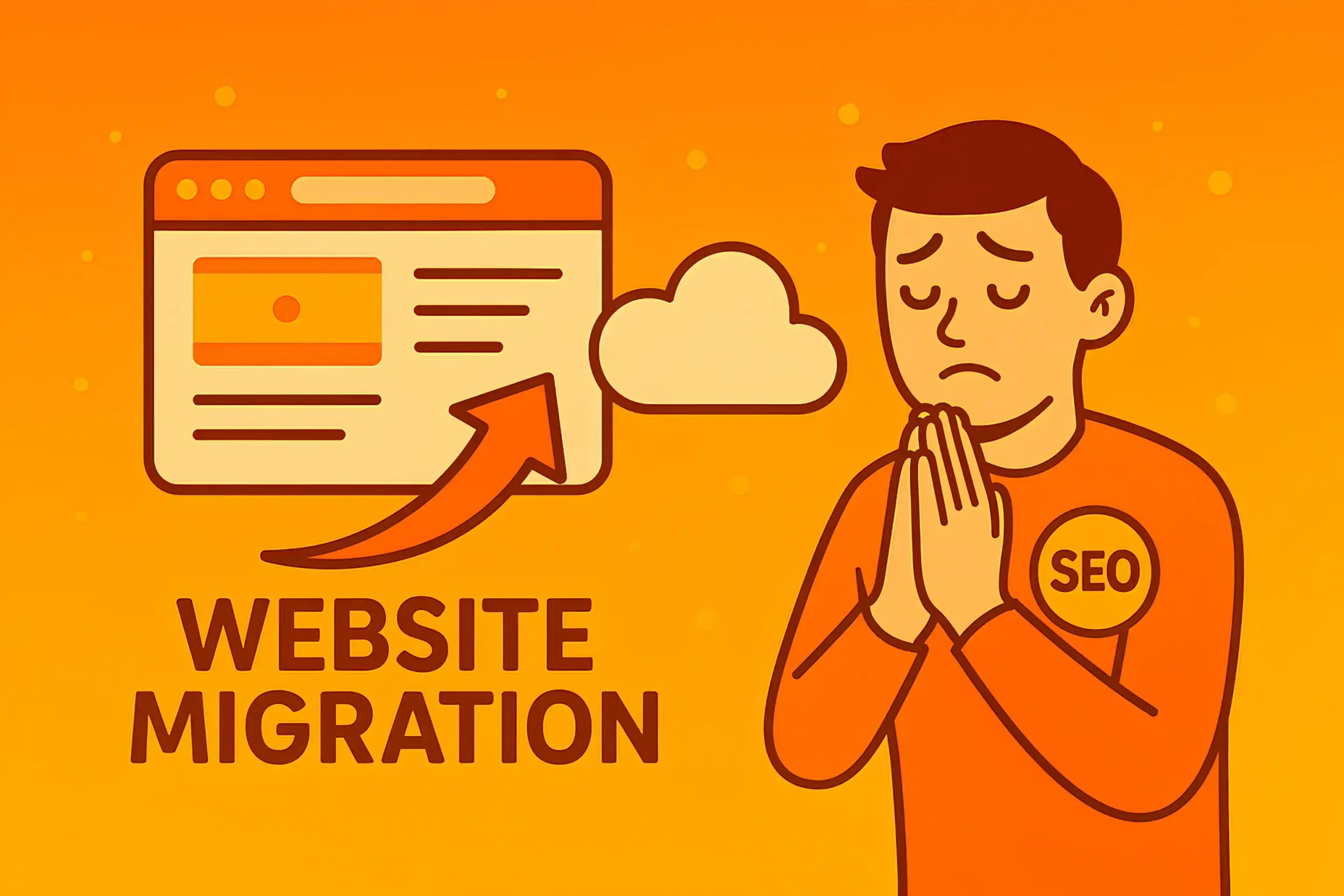
Here’s what I’ve learned.
The earlier SEO gets involved in the process, the safer the outcome. Never treat SEO as an afterthought when the dev team is already halfway done. You should start by mapping every single old URL to its new version, double-check that 301 redirects are correctly set up, and test them before launch.
For multilingual SaaS sites, migrations get even trickier. Platforms like Webflow often handle hreflang tags differently. You have to make sure all your localized versions (like /de/, /fr/, /es/) still point to each other correctly.
Technical details matter a lot here. Make sure:
- Your new site is crawlable and indexable (robots.txt and meta tags are correct).
- The XML sitemap reflects the new URLs only.
- Canonical tags don’t accidentally point to the old domain.
- Analytics, tracking pixels, and conversion scripts are all active from day one.
If your migration also includes a design overhaul, be careful with internal links. Developers love to “simplify” menus, but sometimes they remove important internal connections that carry authority between your key pages.
No migration goes 100% perfectly. But if you plan properly and stay proactive, you won’t lose visibility; you’ll just look stronger under a new name.
The Future of SaaS SEO
I don’t know what others think, but here’s my honest take. I read all the predictions, I follow the trends, but I trust what I see in real work more than what people post on LinkedIn.
From what I see, the next five to ten years in SEO will look completely different, especially for SaaS.
The rise of LLMs is going to be huge. I mean, it already is, but it’s still just the beginning. Tools like ChatGPT, Gemini, and whatever comes next are changing how people find information.
The next generation, especially Gen Z and the ones coming after, won’t “Google” in the same way we used to. They’ll ask questions directly inside AI tools and get summarized answers in seconds.
If you want relevant editorial features from SaaS, tech, and business sites, our SaaS link-building services are designed to secure those placements.
If you run a SaaS company, this is the time to take your SEO seriously, but not in the old way. The content that will win is bottom-of-the-funnel, expert-driven, and user-focused.
People will go deeper only when they want a real opinion, data, or product experience. So if your content feels generic, it’ll just become food for the LLMs, it’ll get read, summarized, and forgotten.
Your website also needs to be optimized not just for Google but for LLM visibility. That means structured data, clear product information, pricing, reviews, comparisons, and in-depth answers; things AI models can understand and reference confidently.
The better your brand reputation and authority, the more likely you’ll appear in those AI-generated answers.
I believe SaaS SEO isn’t dying, it’s just evolving. The ones who start preparing for LLM-based search now will lead the next era of visibility. The ones who ignore it will be trying to catch up when it’s already too late.
Do We Need a Dedicated SaaS SEO Consultant?
Of course. Even if you already have an in-house SEO team, sometimes you still need an external SaaS SEO consultant. There are things your internal team might not have faced before, like complex website migrations, full rebrands, or scaling into international markets. A consultant brings a fresh perspective and experience from other SaaS projects, helping you make smarter, faster decisions.
Does SaaS SEO Still Matter With AI Search Results Growing?
Absolutely, even more than before. The rise of AI search results doesn’t kill SEO; it changes how we approach it. You still need content, authority, and trust to be visible.
The difference is, now you’re not just optimizing for Google but also for LLMs. So, SaaS SEO isn’t going anywhere; it’s just evolving.
Is SaaS SEO Worth It for Early-Stage Startups?
Yes, 100%. Like I said earlier, startups just need to take a smarter approach because budgets are limited and every move has to count. But SEO remains one of the highest-quality traffic sources out there. It builds credibility, organic reach, and brand trust; all the things a startup needs to survive.
Should We Invest in Video SEO for SaaS Demos?
Yes, if you can. Video SEO is becoming more powerful than ever. Create demo-style videos for YouTube and short clips for TikTok, Instagram, and even LinkedIn. They help users see what your product does, which builds trust faster than a paragraph ever could.
Can AI-Generated Content Hurt SaaS SEO Performance?
It depends on who’s writing it. Everyone’s using AI at some level now; that’s normal. The real difference is who uses it. If someone who deeply understands your product and audience uses AI to speed up the process, that’s fine.
But if someone with no context relies on AI completely, it’ll show. The content will sound generic, and it’ll perform badly.
Should Founders Be Involved in the SEO Process?
Definitely. Especially for startups and mid-level SaaS companies, founders should stay involved, at least in the important parts. No one understands the product, the customer, and the story better than the founder.
Even if you’re not doing the SEO yourself, your input helps shape the direction, messaging, and priorities.





